- Try for free

Ideas for Black History Month Field Trips

Click on a state to find places and memorials of interest.
AL CA FL GA IN IL KS LA MD MA MI NY NC OH PA TN TX VA WI
16th Street Baptist Church Designed by black architect Wallace A. Rayfield. Location of the 1963 bombing which killed four little girls — Denise McNair, Cynthia Wesley, Addie Mae Collins, and Carol Robertson. Located at 1530 Sixth Ave N at 16th Street N.
Birmingham Civil Rights Museum Statue of Reverend Fred Shuttlesworth. Located at 520 16th Street North.
Smithfield Historic District Zoned in the 1890s for middle class blacks. Has historic marker. Located at Eighth Avenue and Center Street.
Return to Top
Los Angeles
Crenshaw Wall This mural covers the length of a city block and commemorates the achievements and pride of African Americans. Located at 5100 Crenshaw Boulevard.
Dorothy Dandridge Sculpture Dorothy Dandridge, first African American nominated for Best Actress for her 1954 portrayal of Carmen Jones, is part of this memorial to four famous starlets. Dandridge's image faces northeast. Located on Hollywood Boulevard at La Brea Boulevard.
Fire Station #30 Honors African Americans who have served as Los Angeles fireman since 1897. Located at 1401 Central Avenue at 14th Street.
First African Methodist Episcopal Church FAME was founded by Biddy Mason in 1872. Located at 2270 S Harvard Boulevard.
Mann's Chinese Theatre Look for the Sidney Poitier's hands prints. You will also find many African American artists honored on Hollywood's Walk of Fame. Located at 6925 Hollywood Boulevard.
Tom Bradley Holographic Portrait Monument to the former Los Angeles mayor. Located at 200 N Spring Street.
Daytona Beach
Jackie Robinson Stadium A statue of Jackie Robinson being idolized by two youths sits at the entrance of the park. Located at 105 E Orange Avenue on City Island Parkway.
Mary McCloud Bethune House This house is located in the center of Bethune-Cookman College campus. Located on Mary McCloud Bethune Boulevard.
Historic Eatonville This first incorporated African American town was settled in 1887, and was the home of Zora Neale Hurston. Many original property lines and historic markers still exist. Located north of Orlando, exit I-4 at Lee Road, then take an immediate left at Wymore Road. Proceed north 1/2 mile, then take right on Kennedy Boulevard.
Fort George Island
Kingsley Plantation Ruins of slave quarters. Located at the northern tip of Ft. George Island at the Ft. George inlet, east of Jacksonville off Florida A1A.
Martin Luther King Jr. Statue and Park Another park dedicated to the memory of the great Civil Rights leader. Located at 62nd Street at 32nd Avenue Northwest.
Olustee Battlefield Three Colored Troop regiments participated in the largest Civil War battle in Florida. Located two miles east of Olustee on U.S. 90.
Atlanta Daily World Founded in 1928 by W. A. Scott, the Atlanta Daily World is Atlanta's oldest African American newspaper. Located at 145 Auburn Avenue.
Ebenezer Baptist Church Founded 1886. Reverend Dr. Martin Luther King Jr. was co-pastor from 1960-1968. Located at 407 Auburn Avenue.
King Birth Home King lived here for the first twelve years of his life. Located at 501 Auburn Avenue.
Martin Luther King Jr. National Historic Site The Martin Luther King Jr. Historic Site and Preservation District is roughly bounded by Irwin Avenue and Courtland, Randolph, and Chamberlain Streets. Located at 450 Auburn Avenue.
Prince Hall Masonic Building National headquarters of the Southern Christian Leadership Conference. Located at 334 Auburn Avenue.
Fountain City
Levi Coffin State Historic Site From this house, Coffins helped over 2,000 runaway slaves escape the south. You can view where escaping slaves hid in the house. Located at 113 U.S. 27 North.
Indianapolis
Medgar Evers Statue at Medgar Evers Library A life-sized bronze statue of Evers. Located at 4215 Medgar Evers Boulevard.
Chicago Defender Sleeping car porters circulated the newspaper widely in the South during Jim Crow, which attracted thousands of migrants to Chicago. Located at 2400 S Michigan Ave at E 24th Street.
Bronzeville Walk of Fame Features bronze plaques on sidewalks at major intersections which honor Joe Louis, Sammy Davis, JJr. and Mahalia Jackson. A large bronze street map of Bronzeville at 35th Street lists over 120 historic sites in the area. Located from 25th to 47th Streets.
Harold Washington Library Center Chicago native, Washington became the first African American elected mayor of Chicago. Located at 400 S State Street.
Michael Jordan Statue Jordan wears his six championship rings. Located at 1901 W Madison Street.
Tribute to the Great Northern Migration Statue of a hatted man with suitcase honors tens of thousands of African Americans who migrated in the early 20th century to Chicago. Located at Martin Luther King Jr. Drive between 25th and 26th Streets.
Victory Monument for the Eighth Regiment Granite shaft with bronze panels; an African American WWI soldier stands on top. Located at Martin Luther King Jr. Drive and 35th Street.
Fort Leavenworth
Buffalo Soldiers Monument Bronze statue of a Buffalo Soldier, some of whom were headquartered in Kansas. Located about 20 minutes west of KCI airport.
Kansas City
John Brown Monument This statue honors the abolitionist. Located at 27th and Sewell.
Baton Rouge
Allendale Cabin Located on the West Baton Rouge Museum grounds, this two-family slave dwelling contains artifacts from the slave era. Located at 845 N Jefferson Ave in Port Allen, west of Baton Rouge.
Martin Luther King Jr. Monument A memorial to the slain civil rights leader, Dr. Martin Luther King Jr. Located between the Governmental Building and the Theater for Performing Arts on St. Louis Street.
Port Hudson Battlefield In the first major combat action by African American troops in the Civil War. Located at 765 West Plains-Port Hudson Road in Zachary, 10 miles north of downtown, off Highway 19.
New Orleans
Congo Square In the 1700s, enslaved blacks gathered here on Sundays. Located in Armstrong Park at North Rampart and St Ann Streets.
Dew Drop Social Club Greats like Louis Armstrong and Bunk Johnson played here, among others. Located at Lamarque Street near Monroe Street in Mandeville district.
Kunta Kinte-Alex Haley Memorial In the City Docks of Annapolis sits a statue of Alex Haley reading stories to children. This faces a plaque marking Kunte Kinte's 1767 arrival as a slave in the port. Located at the foot of the Annapolis City Harbor.
Thurgood Marshall Monument Erected in 1996. Located at Lawyers' Mall, at College Avenue and Rowe Boulevard.
Billie Holiday Statue An 8 1/2 foot bronze sculpture of "Lady Day." Located on Pennsylvania Avenue between Lanvale and Lafayette Streets.
Black Soldiers Memorial This 9 foot statue memorializes African American servicemen from all American wars. Located in Battle Monument Plaza at Calvert and Lexington Streets.
NAACP Headquarters W. E. B. DuBois and others founded the National Association for the Advancement of Colored People in 1909. Located at 4805 Mount Hope Drive.
Massachusetts
Great Barrington
W.E.B. Du Bois Boyhood Homesite W.E.B. Du Bois lived at this site until he was 17. His family had lived there for more than 200 years and as an adult he often used the home as a retreat. Only the ruins of the original house are visible. Located on the north side of Route 23, approximately two miles west of Great Barrington, Massachusetts.
The Fist Memorial A giant statue of the Joe Louis's forearm. Located at Woodward and Jefferson.
Frederick Douglass-John Brown Meeting Marker Frederick Douglass, John Brown and several abolitionists met at the home of William Webb. Located at Congress and St Antoine.
Joe Louis Statue A large statue of boxing great. Located at 1 Washington Boulevard.
Motown Historical Museum "Hitsville USA" was the spot where many great African American artists began their music careers. Located at 2648 W Grand Blvd near Linwood.
National Museum of the Tuskeegee Airmen This museum honors the 99th Fighter Squadron, 332nd Fighter Group, and the 477th Bombardment Group which became known as the Tuskeegee Airmen. Located at 6325 W Jefferson Avenue.
Orchestra Hall A major stop on the African American Chitlin' Circuit in the 1940s-1960s. Many others, including Count Basie, Billie Holiday, Duke Ellington, and Ella Fitzgerald performed here. Located on Woodward Avenue at Parsons.
Orsel McGhee Residence The McGhees were represented by Thurgood Marshall after they were sued for living in a white neighborhood. The case went to the Supreme Court in 1948. The Court legally abolished restrictive housing laws. Located at 4626 Seabaldt, two blocks north of Tireman.
Soldiers and Sailors Memorial The figure representing Emancipation is said to be based on Sojourner Truth.Emancipation faces the Barry Sanders football mural. Located at Campus Martius across from Kennedy Square.
Blue Summit
Bernard Powell Memorial Monument Statue of the civil rights activist. Located in Spring Valley Park at 28th and Brooklyn.
Charlie "Bird" Parker Gravesite Jazz saxophonist Parker is buried in Lincoln Cemetery. Located at 8604 East Truman Road in Jackson County.
Charlie "Bird" Parker Memorial 17 foot tall bronze bust of Parker. Located at 17th and Vine.
Spirit of Freedom Fountain Memorial to the tireless work of African Americans. Located on southwest corner of Cleveland and Brush Creek.
Jackie Robinson School Jackie Roosevelt Robinson's house was razed to build this school in his honor. Located at 46 McKeever Place.
Plymouth Church of the Pilgrim The "Grand Central Station" of the Underground Railroad. Located at 75 Hick Street.
New York City
African Burying Grounds This cemetery was used for over 100 years and is now marked by a memorial. Located at 97 Orchard Street near Broome.
Apollo Theatre A famous center for African American music. Located at 253 W Martin Luther King Jr. Boulevard between Adam Clayton Powell Jr. and Frederick Douglass Boulevards.
Countee Cullen Library Named in honor of one of the most famous poets of the Harlem Renaissance, Countee Cullen. Located at 104 W 136th Street.
Duke Ellington Statue This 20 foot statue shows Duke standing on a piano, all held in the air by statues of women. Located in Central Park at Fifth Avenue and 110th Street.
Hotel Theresa Jim Crow segregation made this hotel necessary when black artists could not stay in white hotels. Guests included Lena Horne, Billie Holiday, Joe Louis, Cab Calloway, Dizzy Gillespie, Lester Young, and Duke Ellington. Located at 2090 Adam Clayton Powell Boulevard at 125th Street.
Jackie Robinson Park and Recreation Center This large park features two plaques honoring Robinson. Located at 89 Bradhurst Avenue.
James Weldon Johnson Homesite Author of "Lift Every voice and Sing," Weldon Johnson lived here from 1925 to 1938. Located at 187 W 135th Street near Adam Clayton Powell Boulevard.
National Urban League Headquarters This organization serves over two million people each year. Founded in 1910. Located at 120 Wall Street.
Paul Robeson House This building where the Robeson family lived from 1939-1941, is a National Historic Landmark. Located at 555 Edgecombe Avenue.
Louie Armstrong House Home of Armstrong from 1940 to 1971. located at 3456 107th Street.
North Carolina
Bennett Place State Historic Site This is the site where Confederate General Joseph E. Johnston and Union General William T. Sherman discussed repaying emancipated slaves for their labors with 40 acres and a mule. Andrew Jackson reversed the order after Lincoln's assassination. Located at 4409 Bennett Memorial Road.
Royal Ice Cream Company (formerly) Site of the August 1957 sit-ins. Located on the corner of Roxboro and Dowd Streets.
Woolworth's Store (formerly) The site of sit-ins which were attended by Dr. Martin Luther King Jr. Located at 124 W Main Street.
Union Cemetery Oldest black cemetery in North Carolina. Located at the 900 block of South Elm Street.
Walkway of History Sidewalk markers explain six major eras of local African American history. Located at February One Place near South Elm Street.
Woolworth's Building First sit-in site, which helped launch the Civil Rights Movement. Located at 100 South Elm Street.
Martin Luther King Jr. Memorial Gardens Find a life size statue of Dr. King. Located at the corner of Rock Quarry Road and Martin Luther King Jr. Boulevard.
Central High School High school attended by Langston Hughes. Located at 2225 East 40th Street at Central Avenue.
Hough Obelisk In 1966, the Hough African American neighborhood erupted in riots and flames. The obelisk commemorates the neighborhood's revitalization. Located at East 79th and Hough Streets.
Jesse Owens Statue A bronze statue honoring the first Olympic athlete to earn 4 gold medals. Located in Fort Huntington Park, West 3rd Street and Lakeside Avenue.
Pennsylvania
Philadelphia
All Wars Memorial to Colored Soldiers and Sailors 12 life-size figures honor three centuries of African American veterans. Recently moved to a less obscure spot. Located at Benjamin Franklin Parkway at 20th Street.
First Protest Against Slavery In 1688, German Quakers held a protest on this spot calling for the abolition of slavery. Pennsylvania went on to become the first state to outlaw slavery in 1790. Located at 5109 Germantown Avenue.
John Coltrane House Tenor saxophonist and American jazz pioneer John Coltrane lived here from 1952 until his death in 1967. Located at 1511 N 33rd Street.
Paul Robeson Homesite The great singer grew up in this home. Located at 4951 Walnut Street.
Pearl Bailey Marker The actress, singer, and dancer Pearl Bailey began her career here. Marker located at 1946 N 23rd Street.
Josh Gibson Marker This is the spot where the greatest all-time hitter played. The "Babe Ruth of the Negro Leagues" and Satchel Paige's battery mate with Pittsburgh Crawfords, Josh Gibson hit 84 home runs in one season and his Baseball Hall of Fame plaque says he hit "almost 800" home runs in his seventeen-year career. Located near the Pennsylvania Historical and Museum Commission, on the sidewalk in front of Ammons Playground, once Ammons Field.
Burkle Estate/Slavehaven This small white house was Memphis' most important station on the Underground Railroad. Located at 826 North Second Street.
Ida B. Wells Marker Wells was a journalist and human rights activist. She wrote for a newspaper in Memphis and is honored with this marker. Located on Beale Street near W.C. Handy Park.
Lorraine Hotel/National Civil Rights Museum This site of Dr. Martin Luther King Jr.'s assassination has been turned into a comprehensive Civil Rights museum. Located at 450 Mulberry Street between Calhoun and Vance Streets.
W.C. Handy Home Many of Handy's possessions are on display in this home where he lived as an adult. Located at 352 Beale Street.
W.C. Handy Statue A large statue of W.C. Handy presides over a park where musical festivals are often held. Located at Beale Street, between Hernando and Fourth Streets.
Freedman's Cemetery Memorial honors the over 7,000 African Americans who were buried here. Located on the west side of North Central Expressway, between Lemmon Ave and Hall Street.
Emancipation Park Purchased by Reverend Jack Yates and other former enslaved people in 1872 for Junteenth celebrations. Located at 3108 Dowling Street.
Phyllis Wheatley High School Alumni include Barbara Jordan and Mickey Leland. Located at Solo and Market Streets.
The Battle of Great Bridge You will find a marker where the black Ethiopian Regiment fought Americans on behalf of the British in the Revolutionary War. Exit I-64 to Battlefield Parkway and look for the marker.
Nat Turner Uprising Site The Nat Turner Trail is the path Turner and others took in August 1831 in their famous slave revolt. Located about 40 miles east of downtown Norfolk, take I-264 until it past the interchange with I-64, the next exit is US 58 freeway. Continue going west on US 58 even after it changes to a highway and then a freeway again some miles ahead. A few exits past Franklin you should see the exit for the small town of Courtland in Southhampton County. For information and to make reservations for the next group tour, call H.K. Khalifah at (804) 658-4934 or (757) 723-2696.
John Biggers Murals Large murals by the artist are found in Harvey Library at Hampton University. Located on the Hampton University campus.
Old Point Comfort, Fort Monroe First a landing point for ships carrying Africans, the fort became a refuge for those escaping slavery during the Civil War. Take I-64 to exit 268 to Mallory Street and follow signs to Fort Monroe.
Black Soldiers Memorial A rare Civil War memorial in the south dedicated to African American Union soldiers. Located in Elmwood Cemetery at Princess Anne Road.
Medal of Honor Monument Honors African American soldiers who received Congressional Medals of Honor for valor during the Civil War Battle of New Market Heights near Richmond. Located at Water Street.
Williamsburg
Carter's Grove Plantation A reconstruction of a 17th century plantation, including slave quarters; interpreters discuss their lives. Located on Route 60 at Pocohontas Trail.
Underground Railroad Homes Many homes in Kenosha served as stops on the Underground Railroad. The Deacon Joseph Qualis barn, located at at 6306 8th Avenue. Pastor Deming's home located at 426 Park Avenue. Deacon Smith's home located at 109 Congress Street. John Bullen's home at 6027 7th Avenue.
America's Black Holocaust Museum Founded in 1988 by James Cameron, who is America's only living survivor of a lynching. Located at 2233 N 4th Street.
Featured High School Resources

Related Resources
About the author

TeacherVision Editorial Staff
The TeacherVision editorial team is comprised of teachers, experts, and content professionals dedicated to bringing you the most accurate and relevant information in the teaching space.

- Grades 6-12
- School Leaders
Learn How to Support Stressed and Anxious Students.
Every product is independently selected by (obsessive) editors. Things you buy through our links may earn us a commission.
40 Black History Month Activities for February and Beyond
Celebrate and inspire with these Black history lesson ideas.
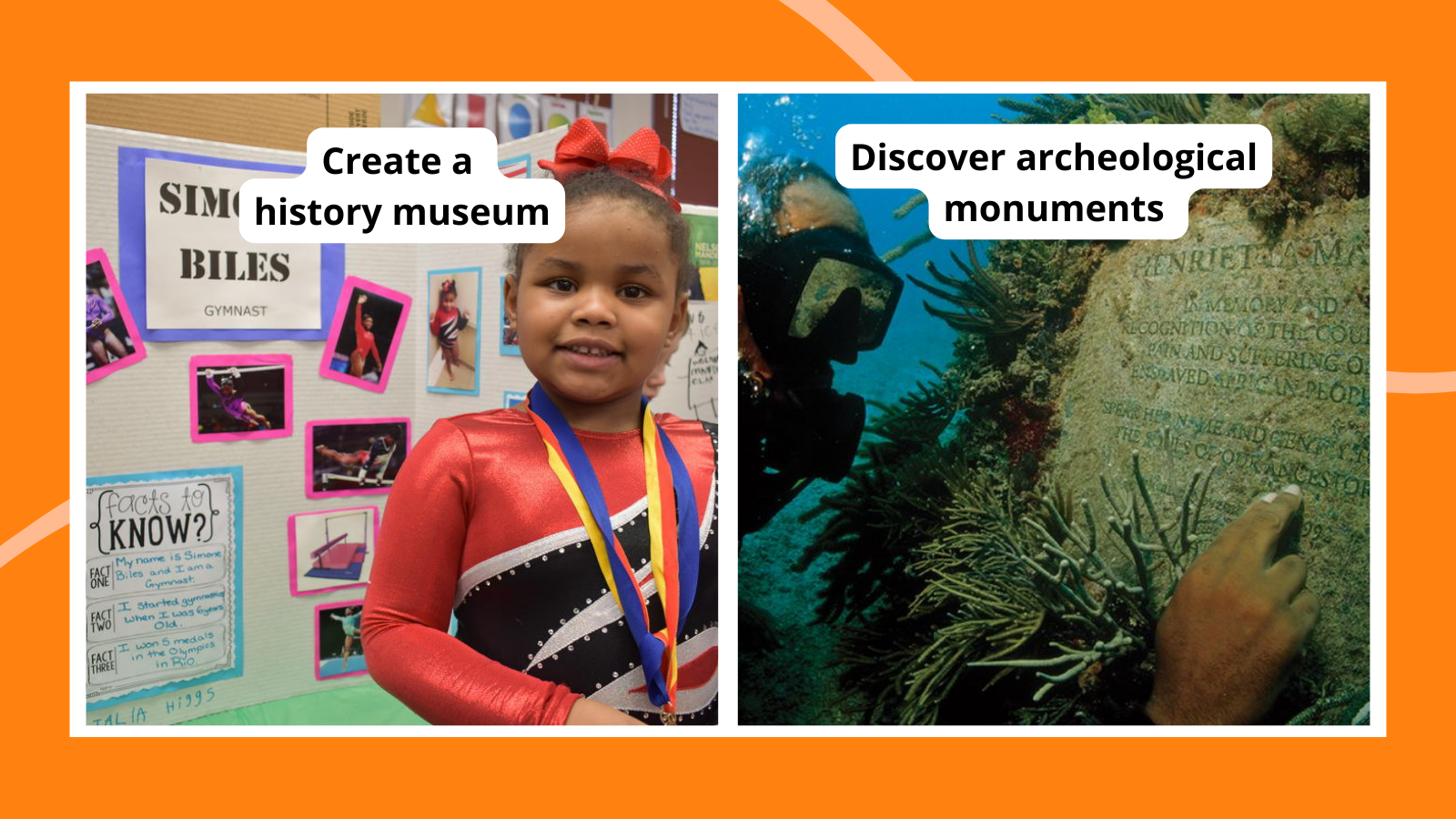
We know that Black history is American history and needs to be embedded into your classroom experiences year-round. At the same time, Black History Month provides the necessary opportunity to dig deeper with students. Every February, we can support students as they learn more, discover cultural impacts, and follow social movements from the past to the present day. These Black History Month lessons and activities cannot be isolated or one-off classroom experiences. Think of how you can connect these topics to what you’re already doing and make it authentic. And most important, do not just focus on oppression: Focus on the joy too!
Since 1928, the Association for the Study of African American Life and History has provided a theme for Black History Month. In 2024, the theme is African Americans and the Arts .
1. Learn the basics about Black History Month
Watch an introductory video about Black History Month. Then ask students to write their questions about Black history and use those to curate your resources and lessons for the month.
2. Re-create civil rights freedom posters

The Civil Rights Movement Veterans site offers powerful examples of freedom movement posters, as does the Civil Rights Digital Library . Review them with your students, and then have them get into groups and create their own to share.
3. Explore Black history through primary sources from the National Archives
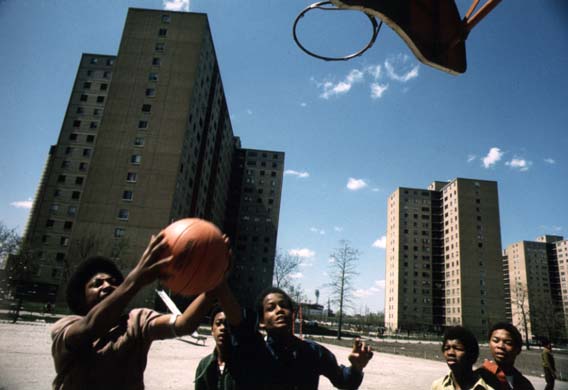
Primary sources are great discussion starters to talk about Black experiences. Choose from thousands of resources , including this 1970s photo series of Chicago.
4. Learn about famous Black artists
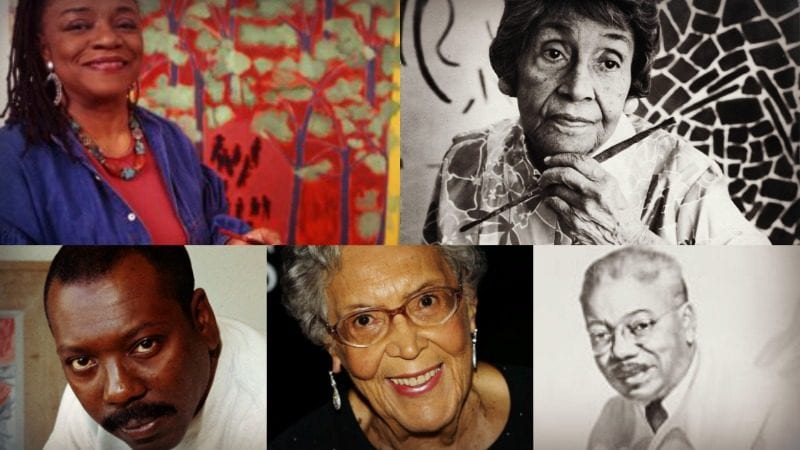
Future Jacob Lawrences and Elizabeth Catletts will appreciate learning more about artists and expanding their own talents. Plus, check out these other Black artists .
5. Watch a Black History Month video
Get more specific information or do a deep dive into an area of Black history with a video about civil rights, slavery, accomplished Black Americans, and more.
Check out this list of Black history videos for students in every grade level.
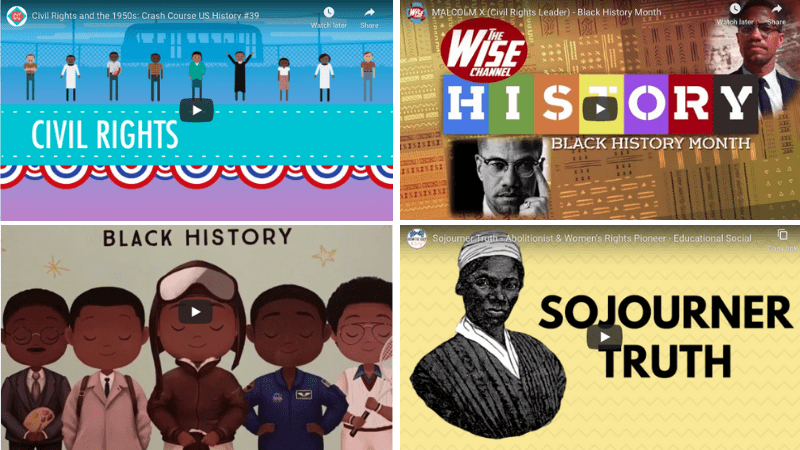
6. Learn about Black Lives Matter
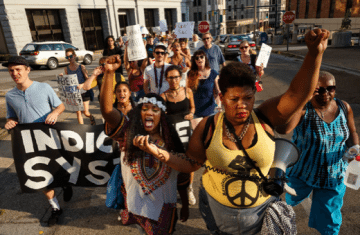
The Black Lives Matter site explains the group’s history while books like Dear Martin and The Hate U Give explore the movement from a fictional perspective.
7. Learn about the inventor of the traffic light
Garrett Morgan invented the traffic light and patented the three-position traffic signal. Teach students about his achievements as an example of how Black Americans impact our everyday experiences. Watch a video about Morgan and talk about what inspired his invention and how being an African American impacted him as an inventor.
Buy it: Garrett Morgan Activity Pack at Amazon
8. Create a newsletter or magazine with content from Black authors
Have your students generate their own newsletter or literacy magazine to distribute to parents. Include poems and short stories by Black authors, as well as student-generated writings and images that center on Black History Month.
9. Read a Black History Month poem
To enhance our conversations this month, we’ve put together this list of powerful Black History Month poems for kids of all ages.
10. Listen to young poet Amanda Gorman
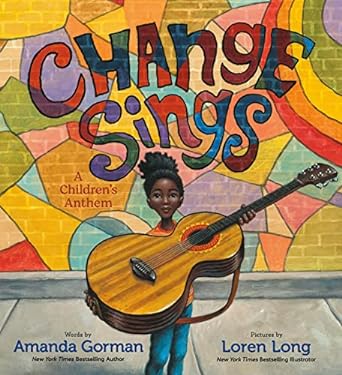
Amanda Gorman is another accomplished Black American and a great introduction to Black poetry. Watch the poem she read at Barack Obama’s inauguration, read her book Change Sings , and learn about her at Poets.org.
Buy it: Change Sings: A Children’s Anthem at Amazon
11. Turn your classroom (or school!) into a history museum
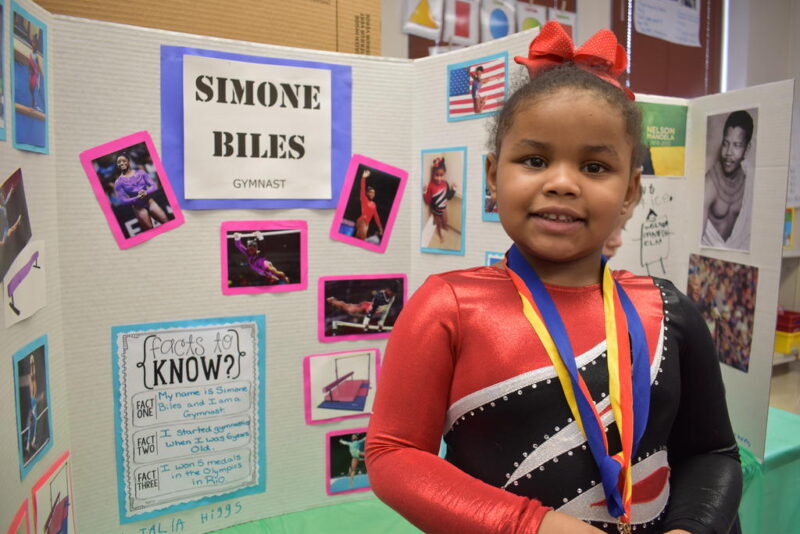
Have your students choose a notable Black pioneer they’d like to know more about, such as voting rights and women’s rights activist Fannie Lou Hamer, dancer Alvin Ailey, or Betty Reid Soskin, the oldest full-time national parks ranger . Then, host a living museum right in your classroom.
12. Decorate your classroom door for Black History Month
Turn your classroom door into an educational experience. Check out how these teachers decorated their classroom doors in amazing ways to showcase Black History Month, and review this video with ideas.
13. Read books with Black characters in honor of Marley Dias
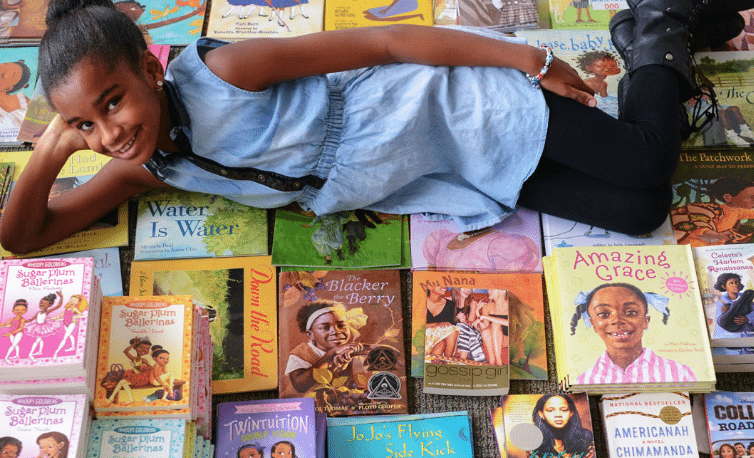
Dias is a young activist who started the #1000blackgirlbooks campaign as a sixth grader. She has compiled an excellent guide to books with Black girl characters . Check out WeAreTeachers’ list of books with Black protagonists as well.
14. Learn the story of the Henrietta Marie
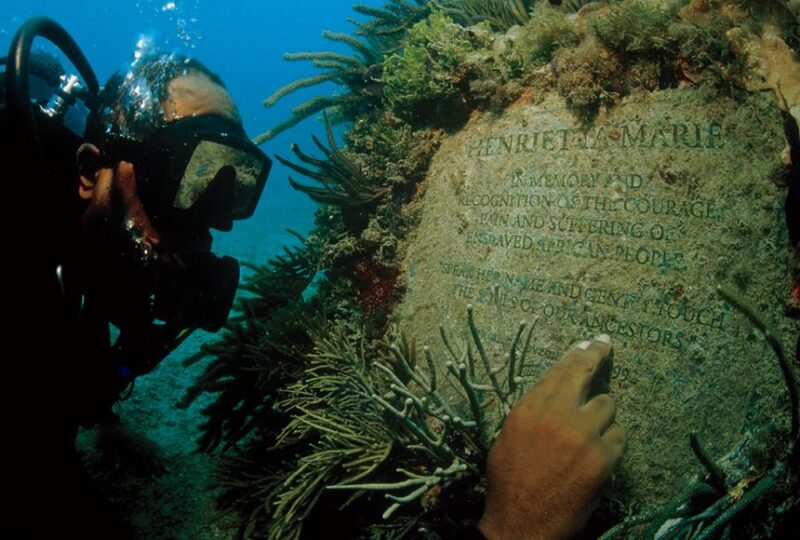
The Henrietta Marie was a slave ship that sunk off the coast of Florida. Learn about the ship, its journey, and the underwater memorial that honors African slaves. Get more information about the Henrietta Marie at National Geographic.
15. Experience the I Have a Dream speech from multiple perspectives
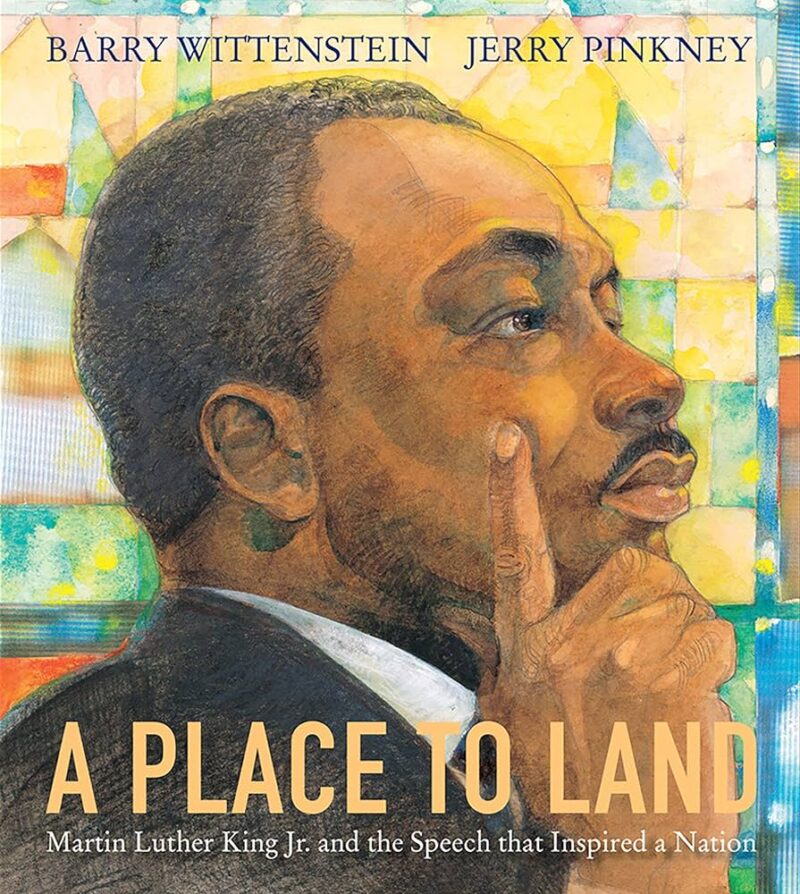
Read A Place to Land: Martin Luther King Jr. and the Speech that Inspired a Nation by Barry Wittenstein. Then, watch the I Have a Dream Speech online, and explore resources about the speech at National Geographic . Engage students in discussing why this speech is so important in American history and why it continues to resonate today.
Buy it: A Place to Land at Amazon
16. Meet Oprah
Oprah Winfrey is a name every student knows, learn more about this influential Black American in this interview:
17. Read Black History Month books
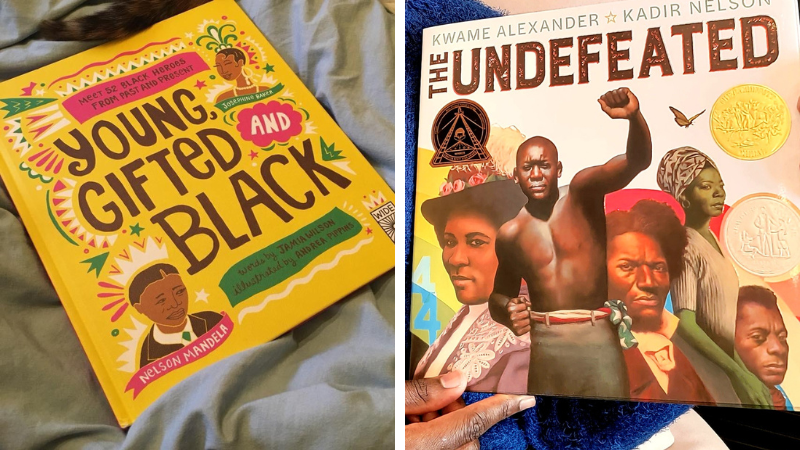
If you’re looking for more reading activities, these picture books help celebrate Black History Month and educate your students on how these influential Black people helped shape history.
18. Learn the art of stepping
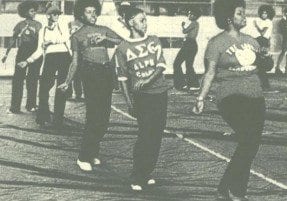
Stepping is a form of dancing in which the body itself is used to create unique rhythms and sounds. The website Step Afrika! has videos and information about the history of stepping.
19. Take a virtual field trip to the Schomburg Center for Research in Black Culture
![Roy Bryant [Misc.] Black and white photo from the Emmett Till Project](https://www.weareteachers.com/wp-content/uploads/GettyImages-50346751_master.jpg)
The digital collections of the Schomburg Center, located in New York City’s Harlem neighborhood, feature some amazing online exhibits, interviews, and podcasts.
20. Virtually visit the Smithsonian National Museum of African American History and Culture
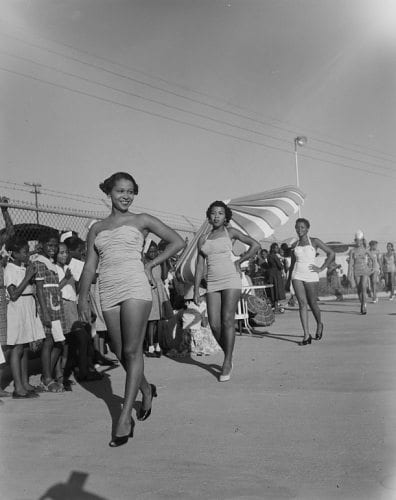
You can browse the collection online by topic, date, or place.
21. Host a poetry reading featuring works by Black poets
Have students choose a poem by a Black poet to learn and recite for the class. Choose a student to serve as the emcee, write up a program, and set the tone with dimmed lights and jazz music played between performances. The Poetry Foundation has excellent resources that can help get you started.
Here’s inspiration with Maya Angelou’s Still I Rise:
22. Check out online Black history exhibits
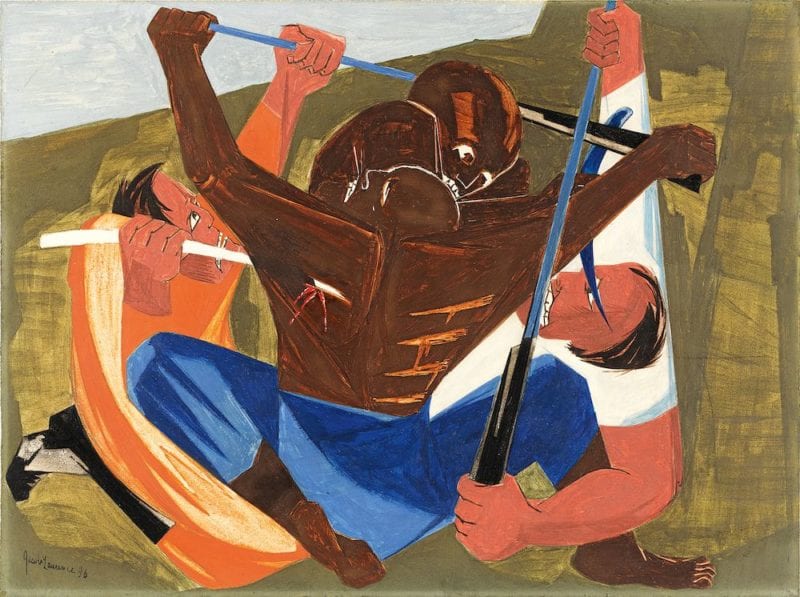
Educating yourself and your students with these shows is one more way to understand Black history and the current moment.
23. Dive into Georgia Stories: Black History Collection on PBS
As a state, Georgia played a huge role in the 2020 presidential election, and its Black history dates back to the earliest days of slavery in the colony.
24. Discuss implicit bias, systemic racism, and social justice
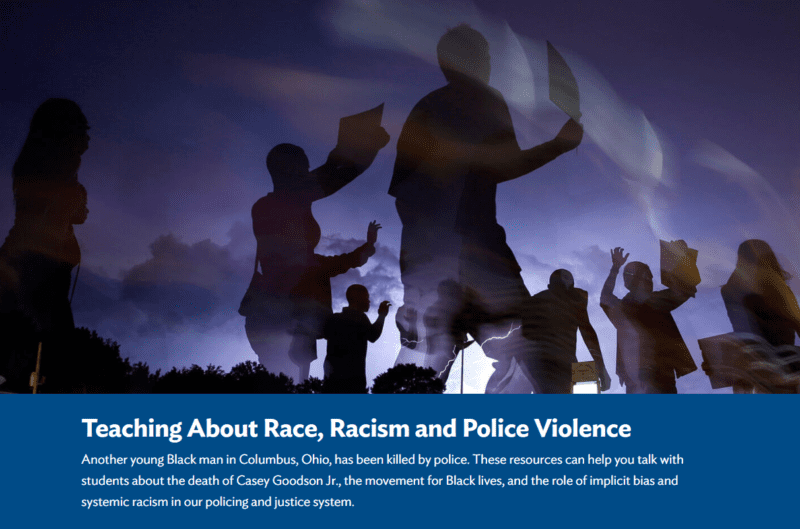
Start a much-needed discussion around implicit bias and systemic racism with these resources that can empower students to fight for justice in our society.
25. Read and discuss Freedom in Congo Square
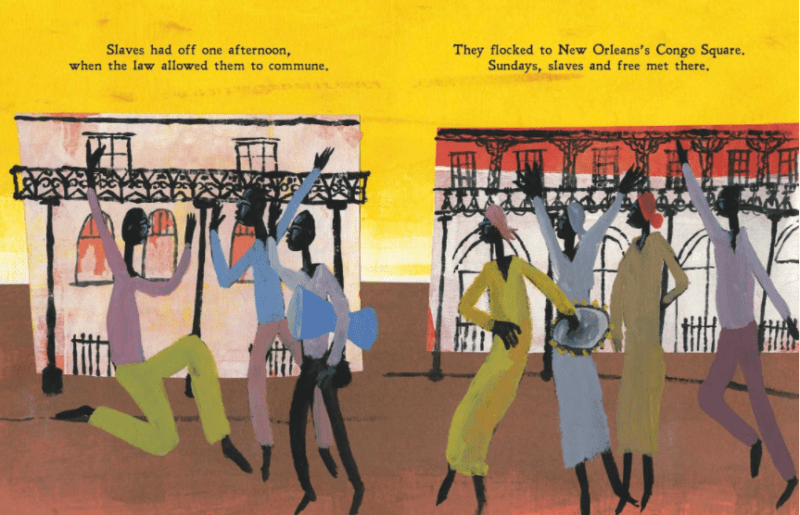
The award-winning picture book Freedom in Congo Square by Carole Boston Weatherford and R. Gregory Christie is a nonfiction children’s book that describes the tyranny of slavery to help young readers understand how jubilant Sundays were for slaves.
Buy it: Freedom in Congo Square at Amazon
26. Watch Kevin Hart’s Guide to Black History
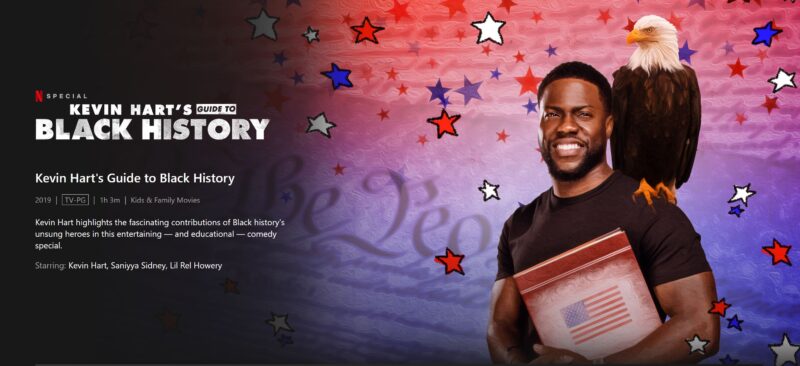
Kevin Hart highlights the fascinating contributions of Black history’s unsung heroes in this entertaining—and educational—comedy special.
27. Recognize Black visionaries
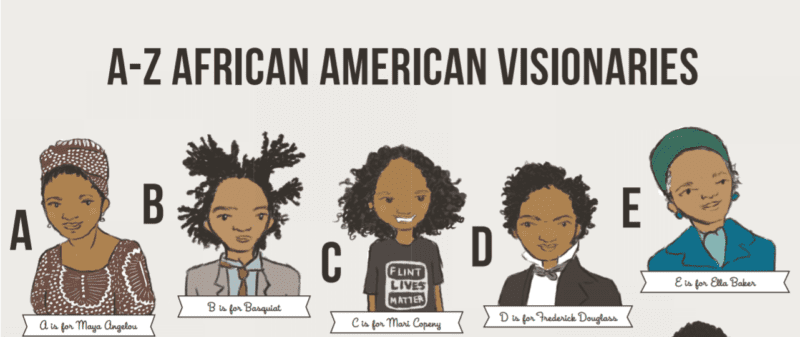
This great poster featuring activists, artists, authors, and revolutionaries will highlight Black changemakers in your classroom. Use companion activities to deepen understanding by researching several of the visionaries and asking students to write a story or create their own poster about what they’ve learned.
28. Review a timeline of Black history
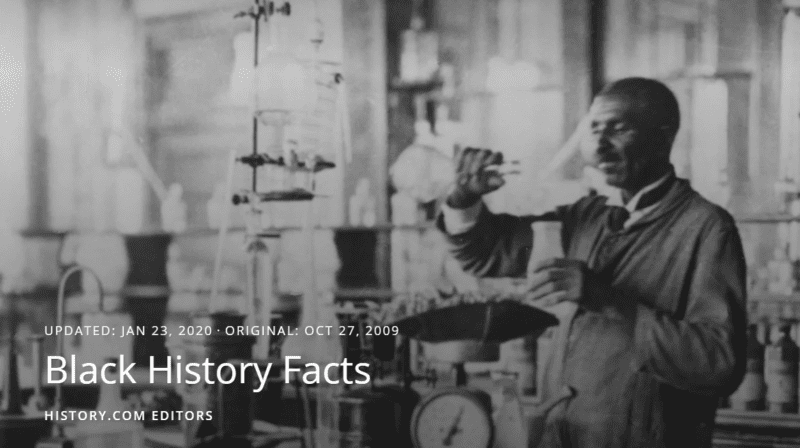
Why is Black History Month in February? How long ago was it founded, and who started it? Find the answers to these questions and learn more with this timeline .
29. Explore the music of Black artists
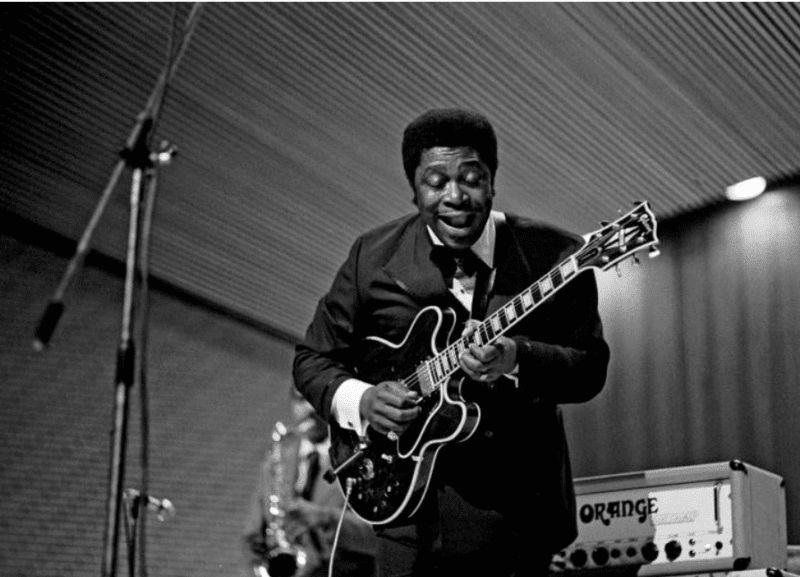
This lesson traces the long history of how Black artists have used music as a vehicle for communicating beliefs, aspirations, observations, joy, despair, resistance, and more across U.S. history.
30. Sample Black-founded snack brands

Honor Black History Month with delicious snacks from Black-founded brands delivered to your classroom—5% of proceeds are donated to the Equal Justice Initiative and one meal is donated to Feeding America for every box delivered.
31. Understand the role of Black women in NASA’s history
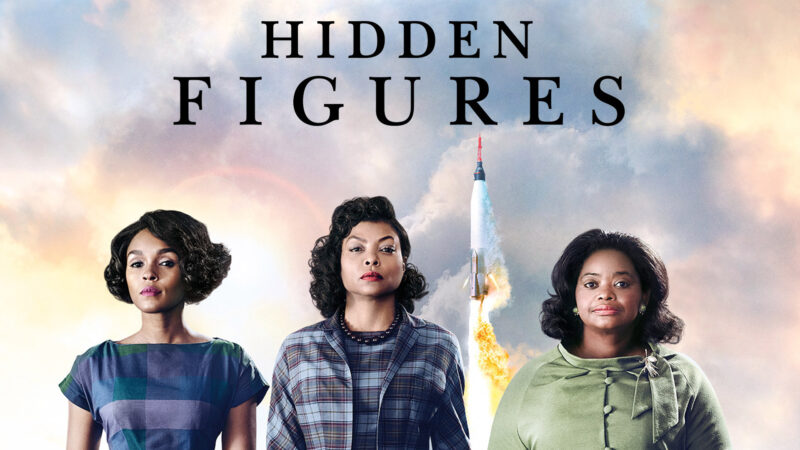
How much do your students know about Black contributions to space exploration? Rent the film Hidden Figures and watch with your students to remember, honor, and share the incredible accomplishments of three Black women working on NASA’s space flight program. Before watching the movie, research the liberties the film took in telling the story and discuss with your students the function of the choices. Did the filmmakers make the right choices?
Watch it: Hidden Figures at Amazon
32. Support local Black-owned businesses
Research your city’s Black-owned businesses and see if you can purchase a sample of their products, invite some of the entrepreneurs to speak to your class, or book a field trip!
33. Stream Bookmarks: Celebrating Black Voices on Netflix
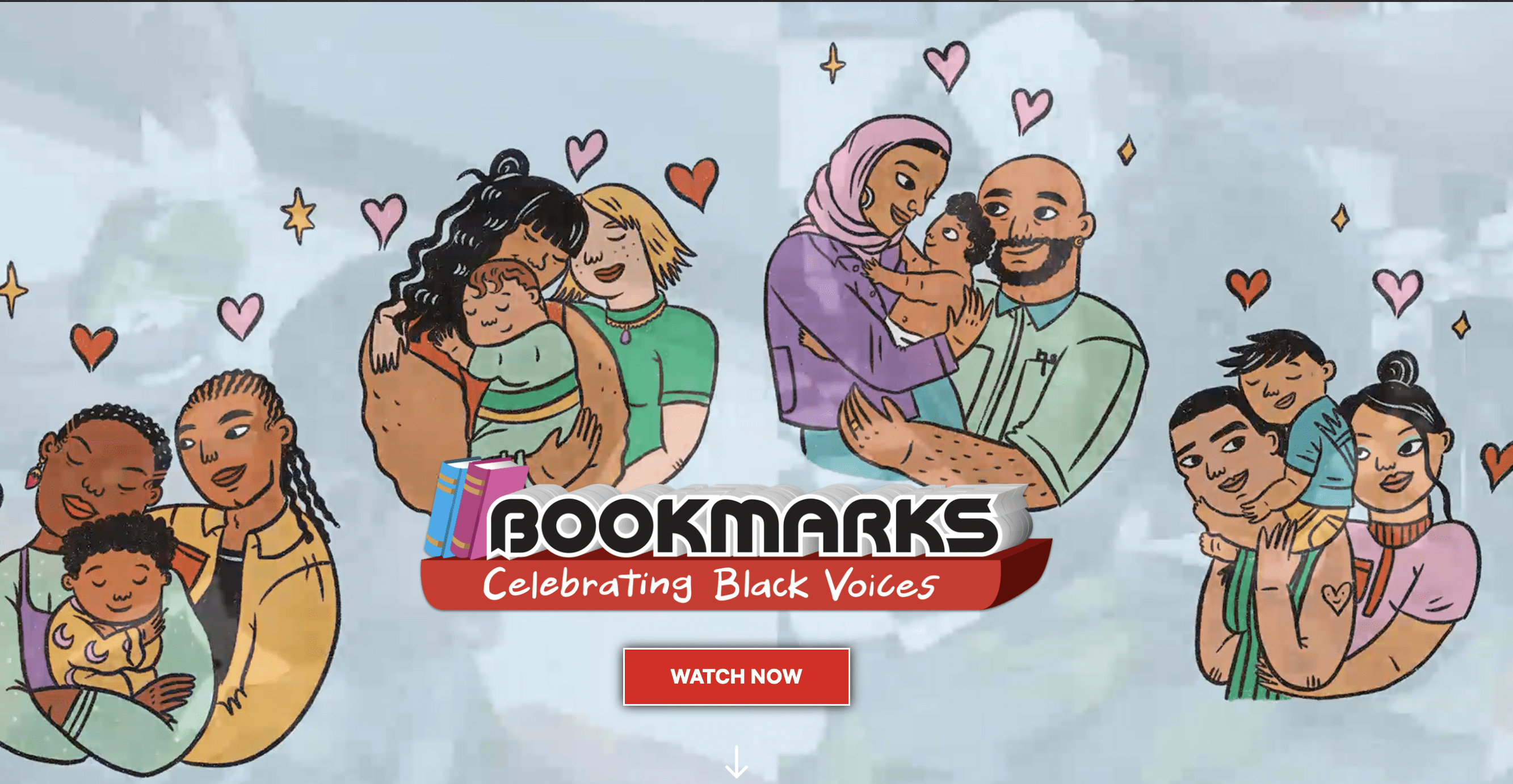
“ Bookmarks: Celebrating Black Voices is a live-action collection of 12 five-minute episodes featuring prominent Black celebrities and artists reading children’s books from Black authors that highlight the Black experience.”
34. Celebrate the “Black Lives Matter at School” movement
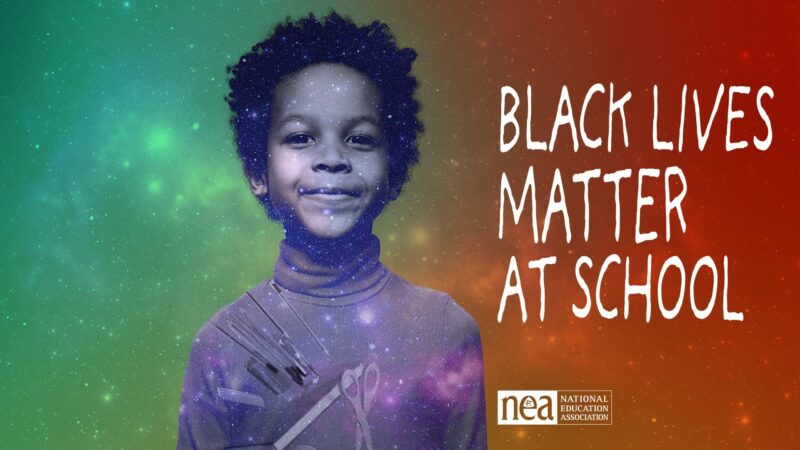
“Black Lives Matter at School” is a national coalition organized for racial justice in education. It encourages all educators, students, parents, unions, and community organizations to join an annual week of action during the first week of February each year. For a variety of Black History Month activities, visit their website to learn more about their campaign .
35. Watch a historic moment
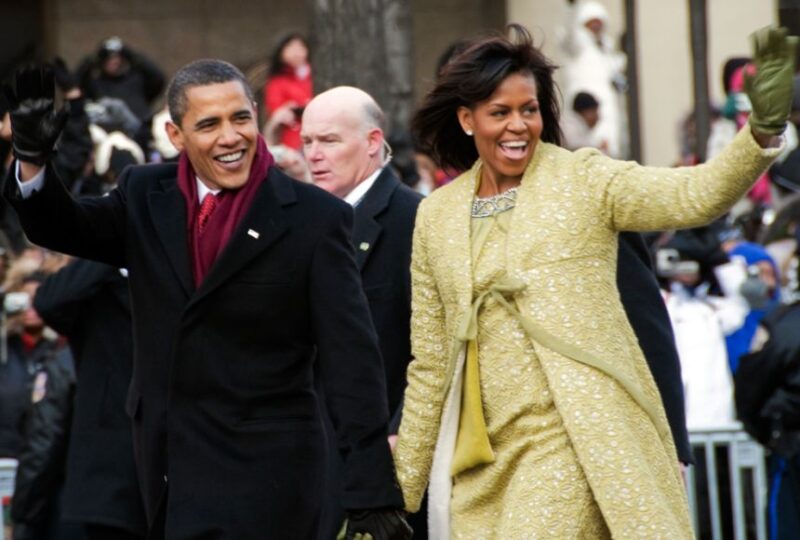
When Barack Obama was inaugurated in 2009, it was a monumental day for Black History. Watch his inauguration and discuss what this meant for American history.
36. Analyze Hair Love
You can approach the book Hair Love by Matthew Cherry in a few ways. Talk about the importance of representation in picture books and media, have students share their connections with the story, or analyze the book as a story about modern Black families.
Buy it: Hair Love at Amazon
37. Study the Underground Railroad
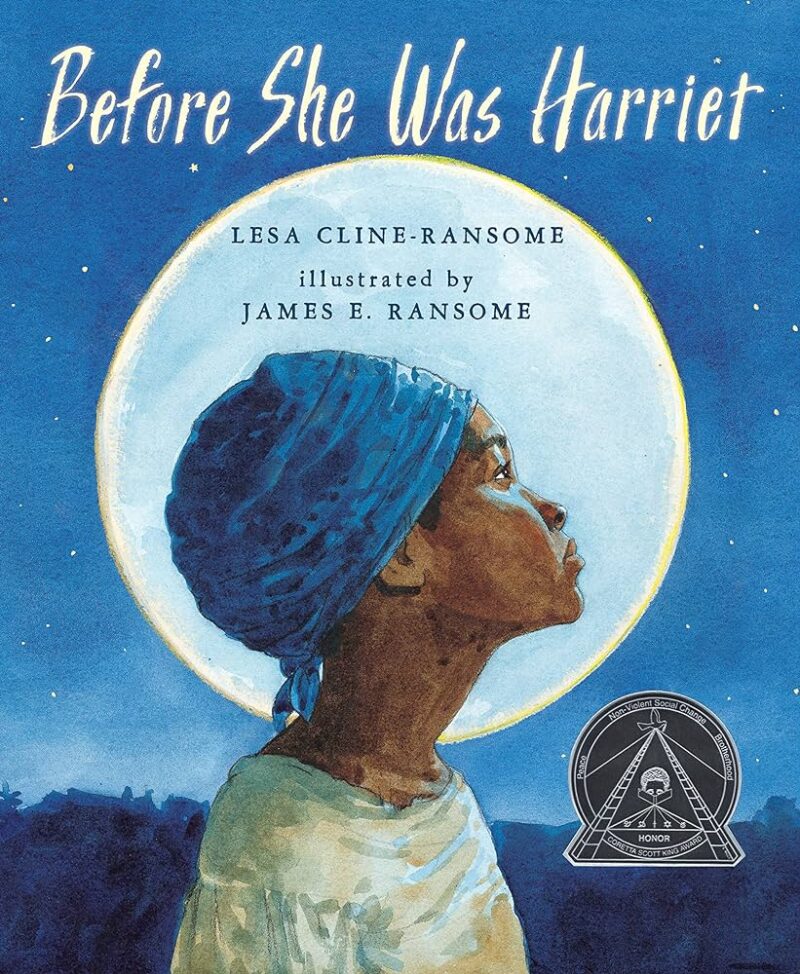
Examine the Underground Railroad using various sources, like the picture book biography Before She Was Harriet by Lesa Cline-Ransome. National Geographic has a collection of resources about the Underground Railroad . And you can take a virtual tour of the Harriet Tubman museum.
Buy it: Before She Was Harriet at Amazon
38. Research Juneteenth
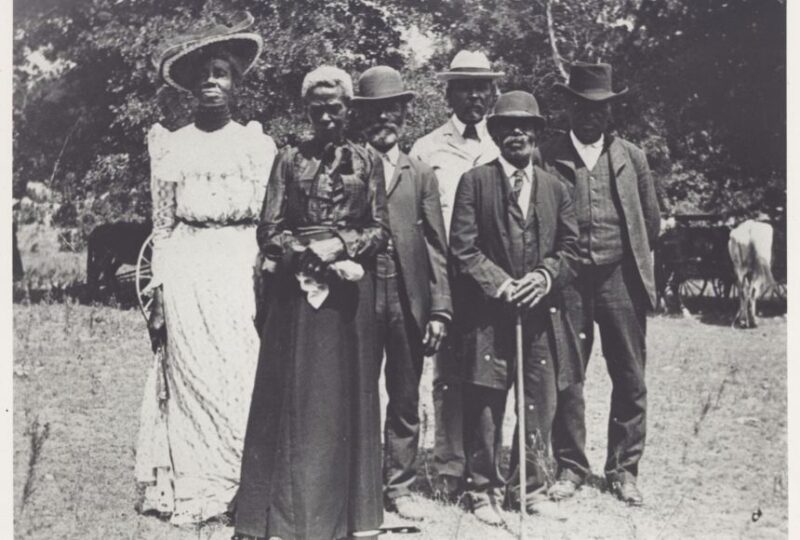
Juneteenth is a holiday that celebrates the freedom of enslaved people. Learn about Juneteenth , how it came about, and what it means to Black Americans with these National Geographic resources.
39. Listen to musician Rhiannon Giddens
As she was trying to understand and make sense of violence against Black Americans in 2020, folk musician Rhiannon Giddens wrote and released the song “Build a House.” The song came out on the 155th anniversary of Juneteenth. The song, which was made into a picture book, captures 400 years of Black history in a lyrical and thoughtful way. Use Giddens’ book either to introduce or wrap up a month on Black history.
Read an essay about the song , and watch the video.
Buy it: Build a House at Amazon
40. Study the pivotal court case Loving v. Virginia
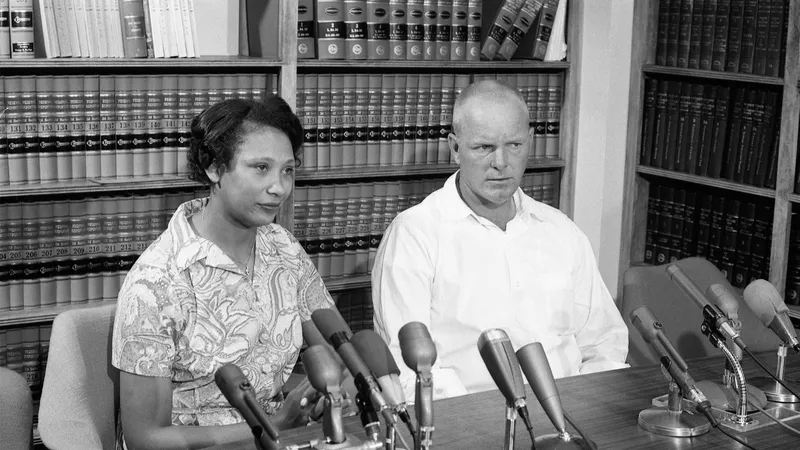
Loving v. Virginia, decided in 1967, made marriage between people of different races legal. Learn about the Loving decision and why it’s important at National Geographic.
Plus, get inspiration from these Black History Month bulletin boards for your classroom .
Want more articles like this subscribe to our newsletters to find out when they’re posted.
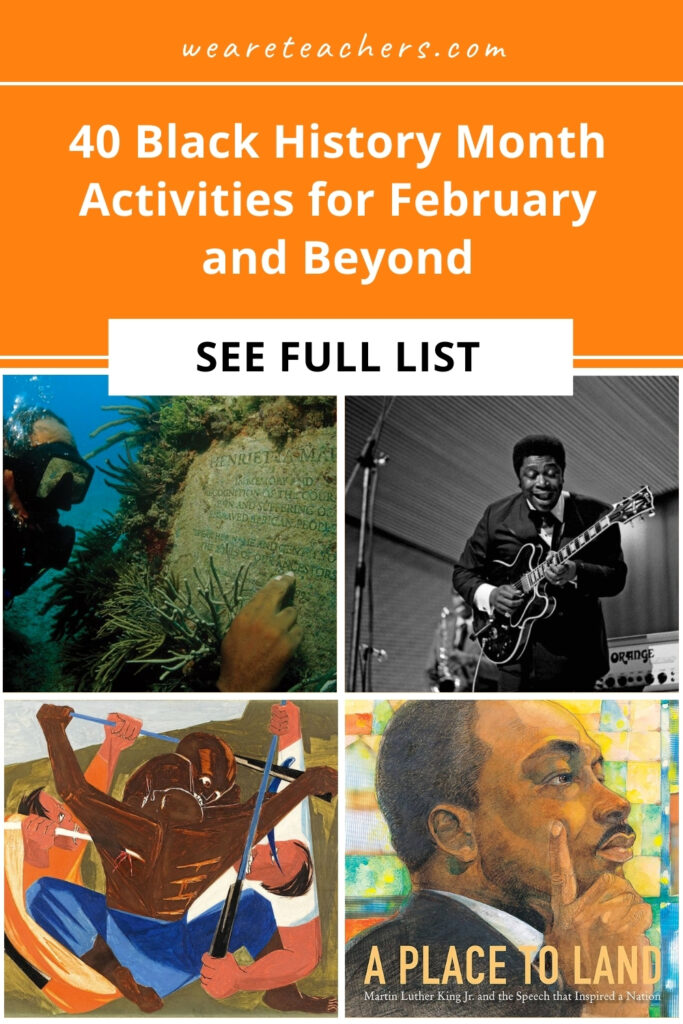
You Might Also Like
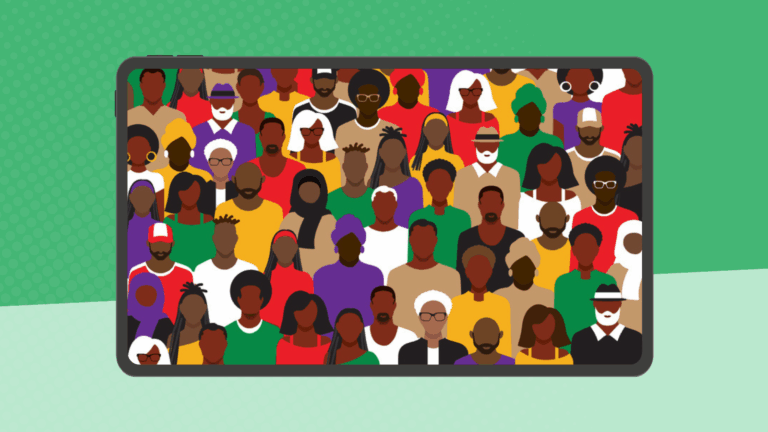
55 Black History Videos Everyone Should Watch
For elementary, middle, and high school. Continue Reading
Copyright © 2024. All rights reserved. 5335 Gate Parkway, Jacksonville, FL 32256
Education | 10 virtual school field trips to take in…
Share this:.
- Click to share on Facebook (Opens in new window)
- Click to share on Reddit (Opens in new window)
- Click to share on Twitter (Opens in new window)
Digital Replica Edition
- Latest Headlines
- Environment
- Transportation
- News Obituaries
Education | 10 virtual school field trips to take in February in honor of Black History Month and Presidents Day
Some are free to “visit” while others cost a fee.

School field trips, like snow days , have become casualties of the COVID-19 pandemic. But several museums are helping bring the immersive education experience to computers and classrooms across the country.
The Center for Interactive Learning and Collaboration recently culled a list of virtual exhibits teachers and families can visit in honor of Black History Month and Presidents Day. The best part? You don’t even have to get on a bus.
Some of the featured exhibits, such as the Smithsonian American Art Museum’s “African American Artists,” are free to peruse. Others, like the “Underground Railroad Immersive Experience” by the Ohio History Connection, cost a fee.
Here’s your guide to February’s top 10 virtual field trip picks.
View more digital programming here.
“Underground Railroad Immersive Experience” presented by Ohio History Connection; $135-$150
“Double Victory: African American in WWII” presented by National World War II Museum; $80-$100
“African American Artists” presented by Smithsonian American Art Museum; free
“It’s Not Black or White: How a Museum Defines ‘Race’” presented by the Cleveland Museum of Natural History; $140-$200
“America’s Presidents” presented by Smithsonian’s National Portrait Gallery; free
“Young Abraham Lincoln” presented by Learn Around the World; $140-$200
“The Pursuit of Liberty: the Revolutionary War and the Founding of America” presented by Virginia Museum of History and Culture; $125
“Investigating the Lincoln Assassination with Detective McDevitt” presented by Ford’s Theater; $90-$100
“George Washington and the French and Indian War” presented by Fort Necessity National Battlefield; free
- Report an Error
- Submit a News Tip
More in Education

Election | Colorado’s 3rd District prepares for epic, costly election battle — even without Lauren Boebert

Colorado News | Protesters demanding CU divest from Israel set up camp at Denver’s Auraria Campus

Education | Parents demand independent investigation into response to attempted kidnapping at Aurora school
![By JONEL ALECCIA (AP Health Writer) The nation’s school meals will get a makeover under new nutrition standards that limit added sugars for the first time, the U.S. Department of Agriculture announced Wednesday. The final rule also trims sodium in kids’ meals, although not by the 30% first proposed in 2023. And it continues to […] By JONEL ALECCIA (AP Health Writer) The nation’s school meals will get a makeover under new nutrition standards that limit added sugars for the first time, the U.S. Department of Agriculture announced Wednesday. The final rule also trims sodium in kids’ meals, although not by the 30% first proposed in 2023. And it continues to […]](https://www.denverpost.com/wp-content/uploads/2024/04/School_Meals_Standards_90008.jpg?w=525)
Education | USDA updates rules for school meals that limit added sugars for the first time

Black History Tours
Black history tours is a national multicultural student tour operation and destination management company that is dedicated to educating america’s youth about african-american history., the inspiration for the start of black history tours is derived from a strong conviction and realization that empowerment, pride and awareness can make even the most challenging of obstacles, surmountable ones., dedicated to teaching african american history through travel and cultural exposure.
COLLEGE AND HBCU TOURS
BHT can offer you and your college bound high school students a tremendous opportunity to discover and experience the college selection process.

BLACK COLLEGE TOURS
Schools, churches, birthplaces, museums, and national historic sites honoring African Americans, their struggle for equal rights, and their profound contributions.
GAME & HOMECOMING EVENTS
HBCU Classic Football Games have become so popular that every undergraduate dreams of witnessing them. They have become an integral part of the fall athletic environment at HBCU.
HBCU STEM COLLEGE TOURS
October STEM (Science, Technology, Engineering, and Math) tours provides student with the opportunity to participate in hands-on workshops that go beyond the theory.
MARCHING BAND TOURS
We arrange travel, transportation, and accommodations to the premier marching band parade performance events throughout the United States.
PERFORMING ARTS TOURS
Performing arts tours provide performance opportunities for instrumental, vocal, dance and theatre students in middle school, high school and community groups.
Want more information? Our professionals are waiting to assist you.
Our objective, to empower the black community, enriching them with information to develop self-knowledge and identity through tourism, • promote student group tours, educational programs, learning activities, events and exhibitions for institutions and corporate organizations, • encourage talented young african-americans who have the zeal to explore history through participation in organized tours, • organize personalized tours for individuals and corporate organizations interested in sensitizing people about black history.
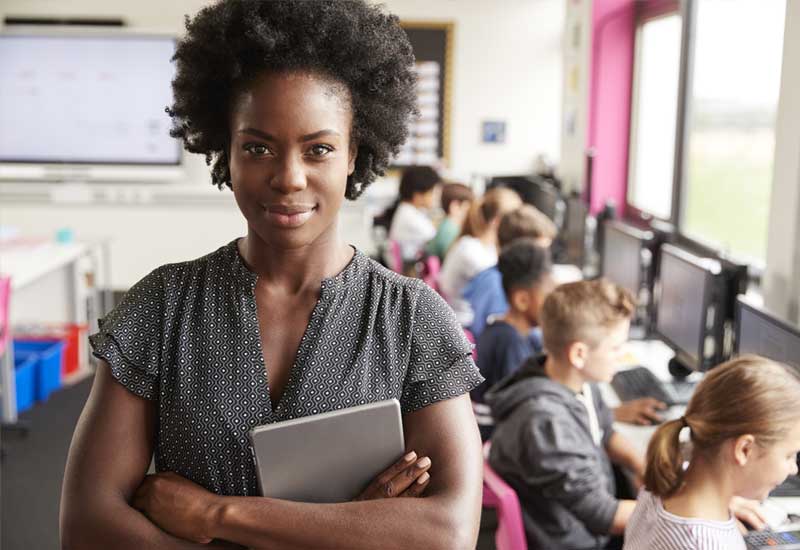
Increase the interest of the young black community in identifying their rich cultural heritage by organizing mega group tours cutting across the entire nation.
• develop our current tourism products and services by enlarging our horizon nationwide, • exploring further opportunities in the learning and tourism to maximize the number of minority student participants, • collaborate with numerous black heritage organizations, • work with institutions to make our international tours affordable.

HBCUSTEMCOLLEGETOURS.COM
FOLLOW US #BLACKHISTORYTOURS #HBCUSTEMCOLLEGETOURS #FLORIDASTUDENTTOURS
Request Quote Travel Packages
- Skip to primary navigation
- Skip to main content
- Skip to primary sidebar
- Skip to footer
Don't Miss a Post! Subscribe
- Guest Posts

- Educational AI
- Edtech Tools
- Edtech Apps
- Teacher Resources
- Special Education
- Edtech for Kids
- Buying Guides for Teachers

Educators Technology
Innovative EdTech for teachers, educators, parents, and students
Black History Month Ideas for School
By Med Kharbach, PhD | Last Update: February 13, 2024
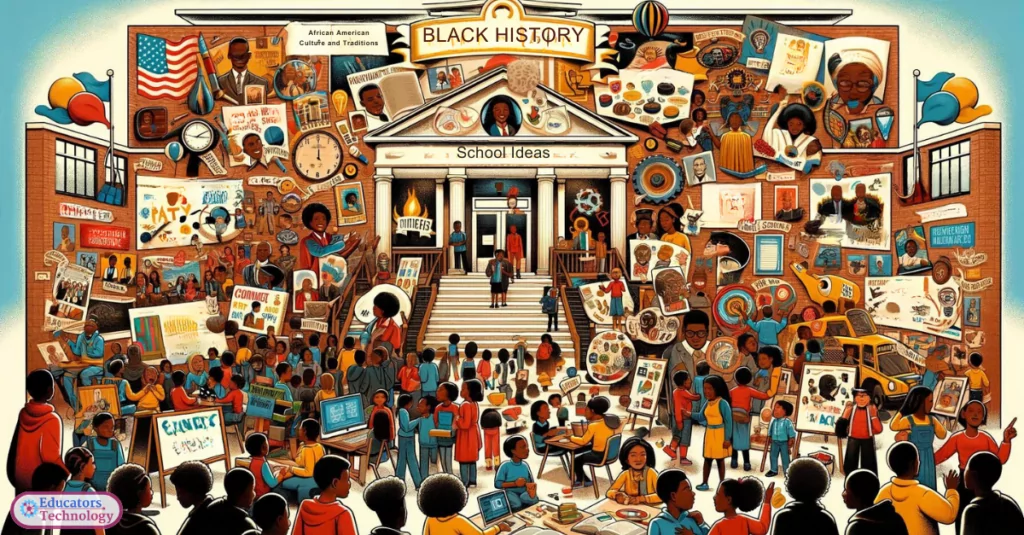
As educators and school communities, we have a unique opportunity each February to engage students in a meaningful exploration of African American history and culture. Black History Month offers a dedicated time to reflect on the contributions, achievements, and struggles of African Americans throughout history.
It’s a chance to enrich our curriculum and school activities with lessons of courage, resilience, and creativity. In this post, we delve into a variety of Black History Month ideas for schools, designed to inspire and educate students of all ages. From decorating class doors to virtual field trips to historic sites, these ideas aim to create a comprehensive and immersive experience for students.
The purpose behind these educational activities is to foster a deeper understanding and appreciation of African American history and culture, encouraging students to carry these lessons of diversity and inclusion throughout their lives.
Related: Black History Month Resources for Teachers
Let’s explore this collection of black month ideas for schools and discuss how they can be implemented to create an enriching and inclusive environment for all students.
1. Decorate Class Doors
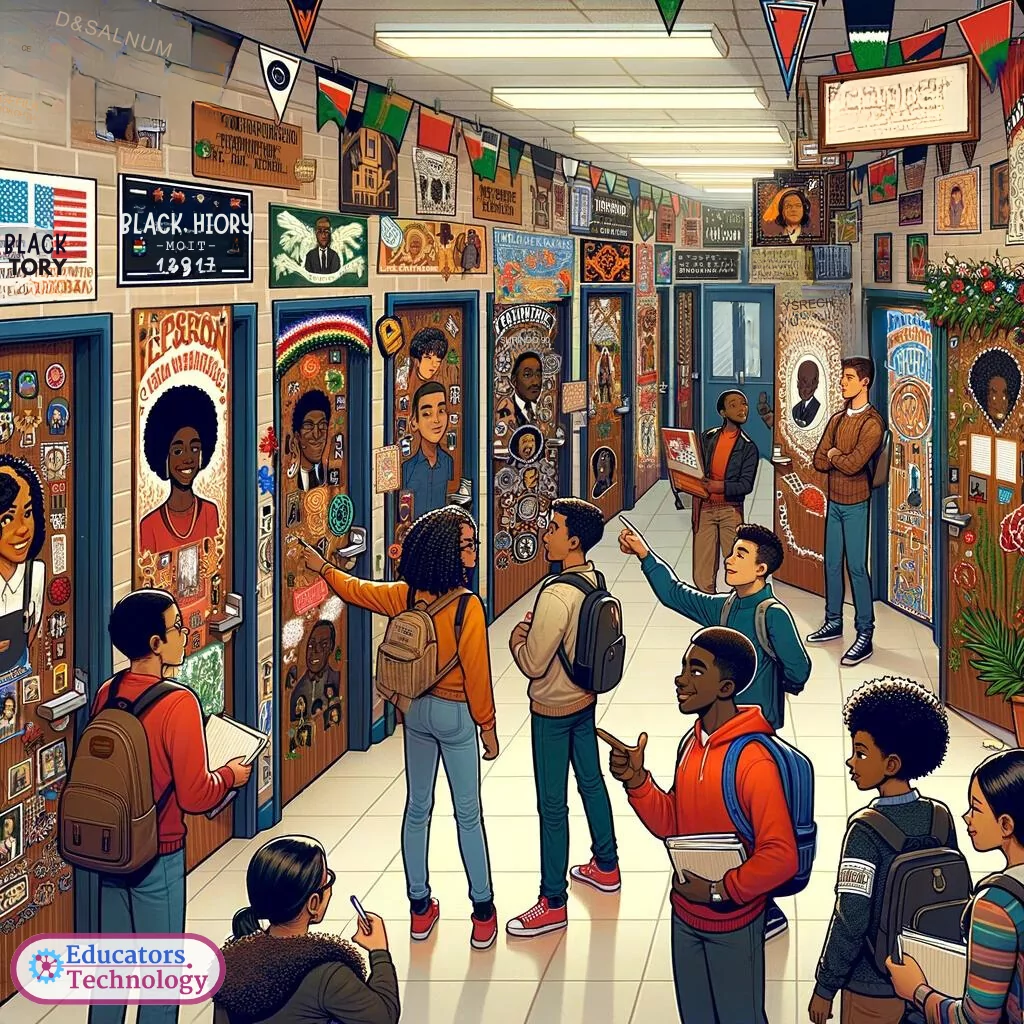
Encourage each classroom to decorate their door with themes related to Black history. This could range from tributes to significant African American figures, events, cultural symbols, or themes of unity and diversity. Hold a contest for the most creative or informative door, with students researching and presenting on their chosen theme. This activity not only beautifies the school but also turns the hallways into an immersive learning experience, sparking curiosity and conversations among students and staff.
2. Create Museums in School
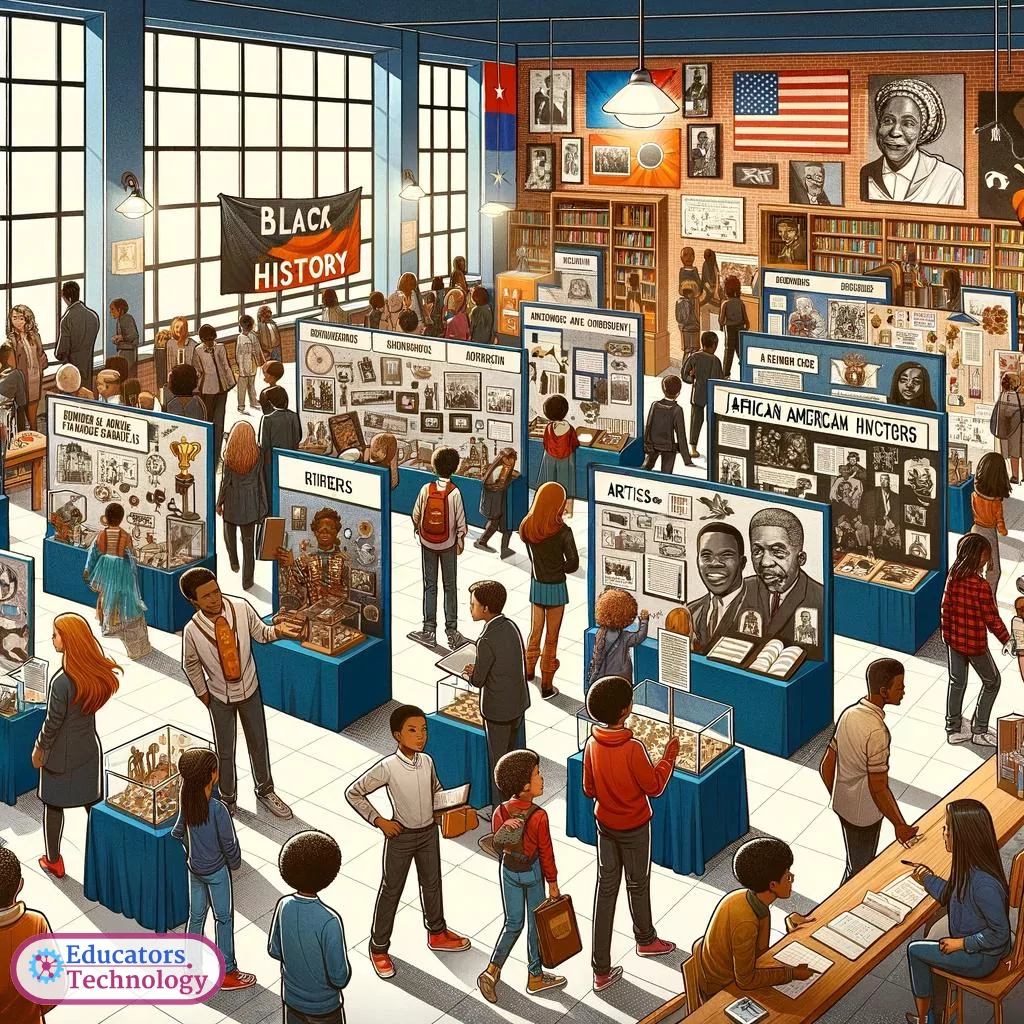
Allocate spaces within the school—such as the library, common areas, or empty classrooms—to set up temporary museums dedicated to Black history. Each exhibit could focus on different aspects, such as the civil rights movement, African American inventors, artists, athletes, and leaders. Involve students in the creation of these exhibits, from research to design, encouraging them to dive deep into their subjects. This hands-on approach allows students to become curators of their learning, presenting their findings to their peers, parents, and the wider school community.
3. Design and Paint Murals
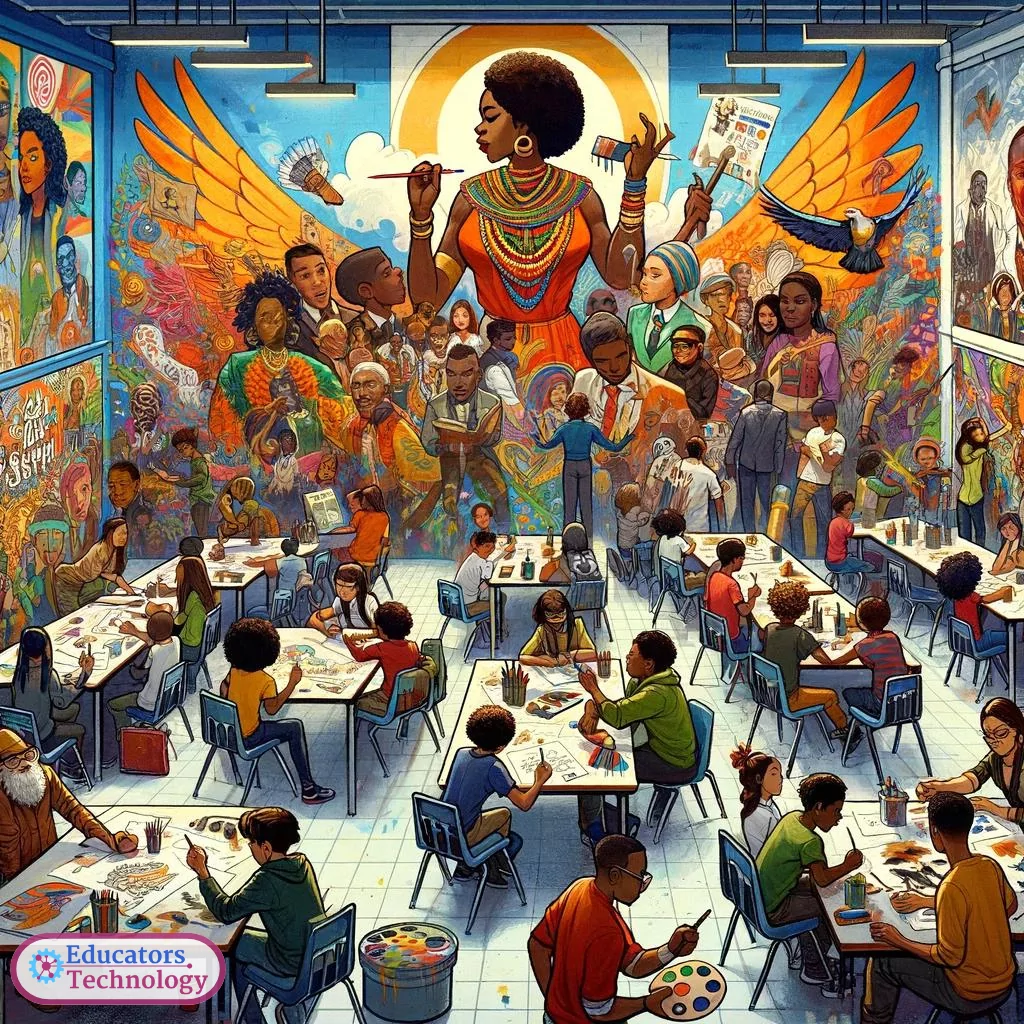
Collaborate with art teachers to guide students in designing and painting murals within the school that celebrate Black history and culture. These could depict key figures, historical events, or themes of equality and justice. Murals serve as a powerful visual reminder of the contributions of African Americans and can inspire pride, unity, and respect among the school community. Additionally, involving local artists in the project can enrich the experience, providing mentorship and fostering connections between students and the broader community.
Related: Black History Month Activities for Adults
4. Visualize Black History
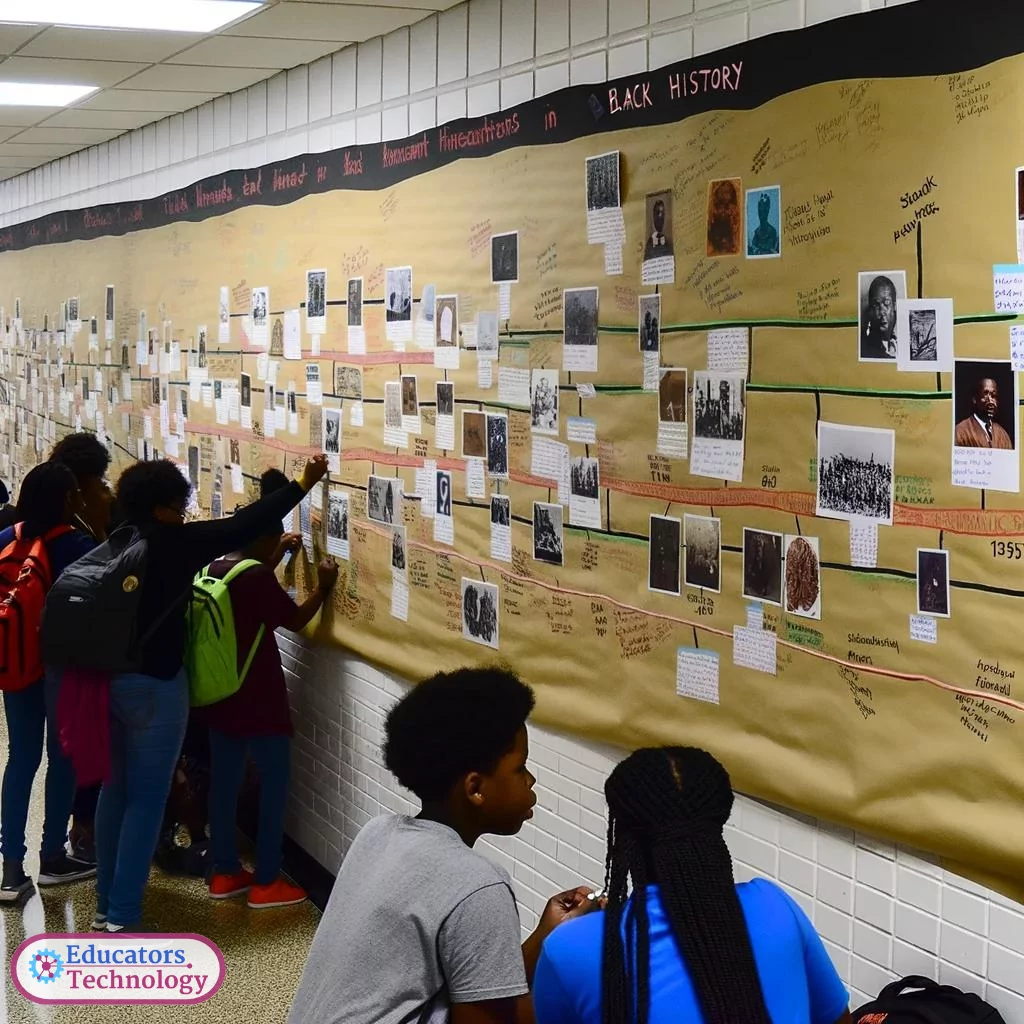
Create a large, interactive timeline along a prominent wall in the school or in a communal space. This timeline can cover significant milestones in Black history, from ancient African civilizations to modern-day achievements and milestones in civil rights and culture. Encourage students from different grades to contribute by researching and adding events or figures to the timeline, making it a collaborative, school-wide project. This visual representation helps students understand the breadth and depth of Black history as an integral part of the world’s history.
5. Invite Local Community

Invite local historians, speakers, activists, and artists to share their knowledge and experiences related to Black history and culture. These guest speakers can offer personal stories, historical insights, and artistic performances, providing students with diverse perspectives and a deeper connection to the material. Hosting panel discussions or Q&A sessions with guests can further engage students, allowing them to ask questions and participate in meaningful dialogues.
6. Organize Movie Screenings
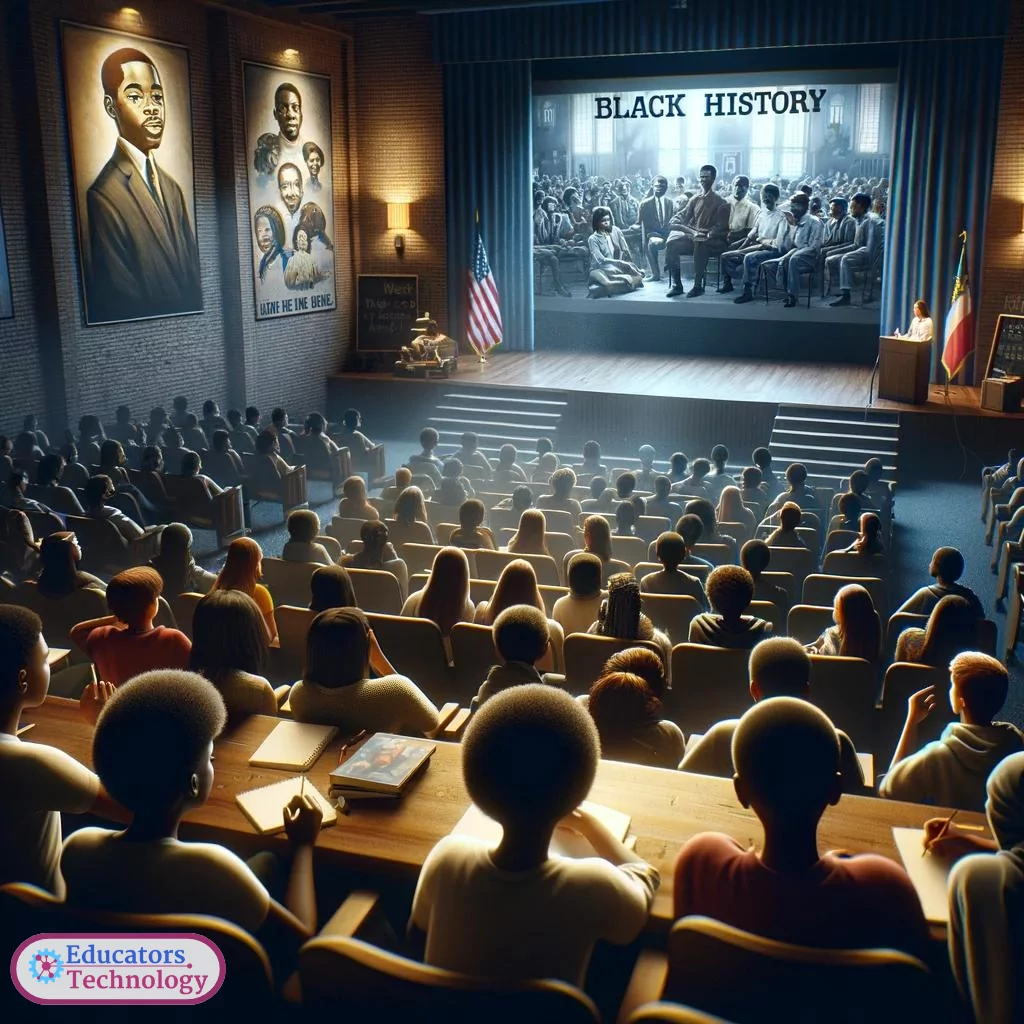
Organize movie screenings that highlight important themes, stories, and figures in Black history. Choose films that are appropriate for the school setting and conducive to educational discussions. After each screening, facilitate guided discussions or group projects based on the movie’s themes, encouraging students to reflect on what they’ve learned and how it relates to their understanding of history and contemporary issues. Here is a list of the best 20 Black History movies to check out.
6. Host a Black History Month Book Fair
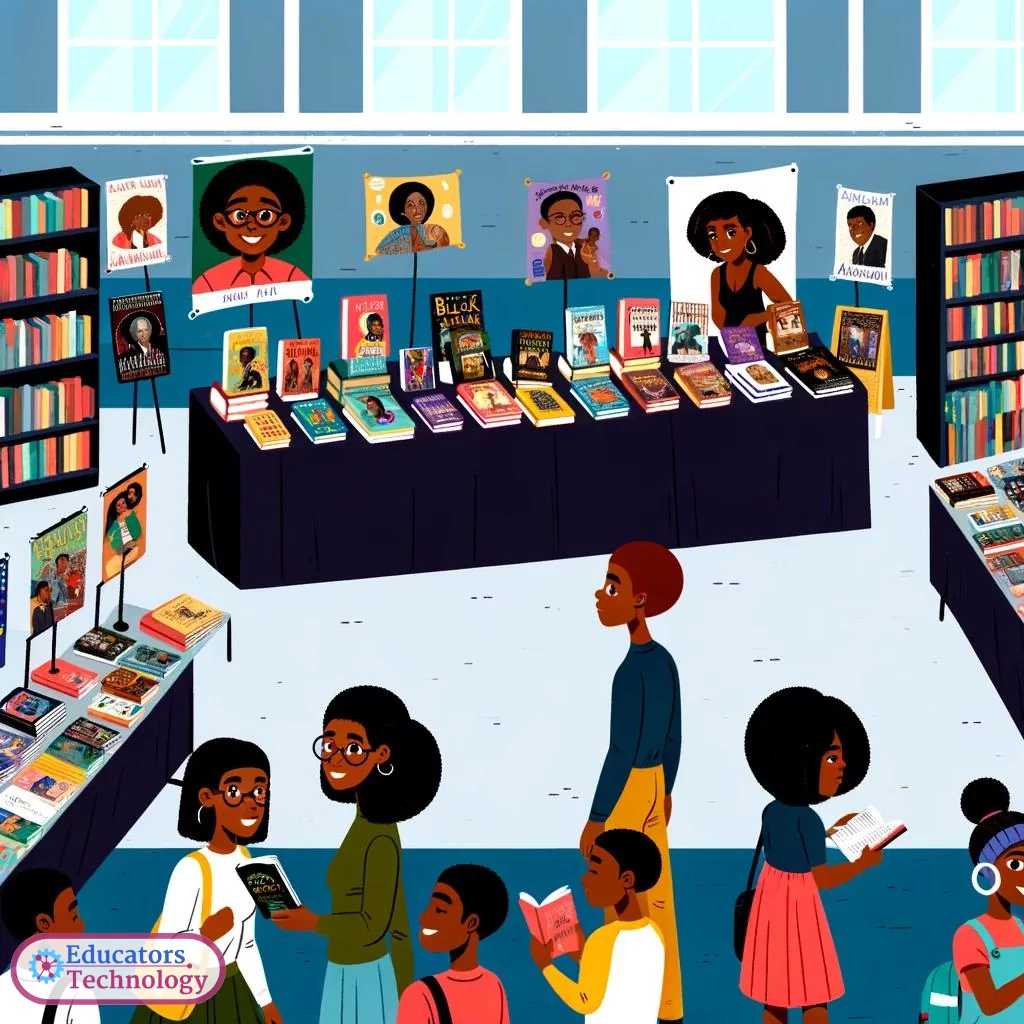
Organize a book fair featuring works by African American authors across genres, including history, fiction, poetry, and autobiographies. This can introduce students to the rich literary heritage of Black writers and encourage reading and discussion around their works. Incorporate book talks, author visits (virtually or in person), and reading challenges to engage students further. Highlighting books for all age groups ensures that every student finds something inspiring to read and learn from.
7. Conduct a Black Innovators and Leaders Science Fair
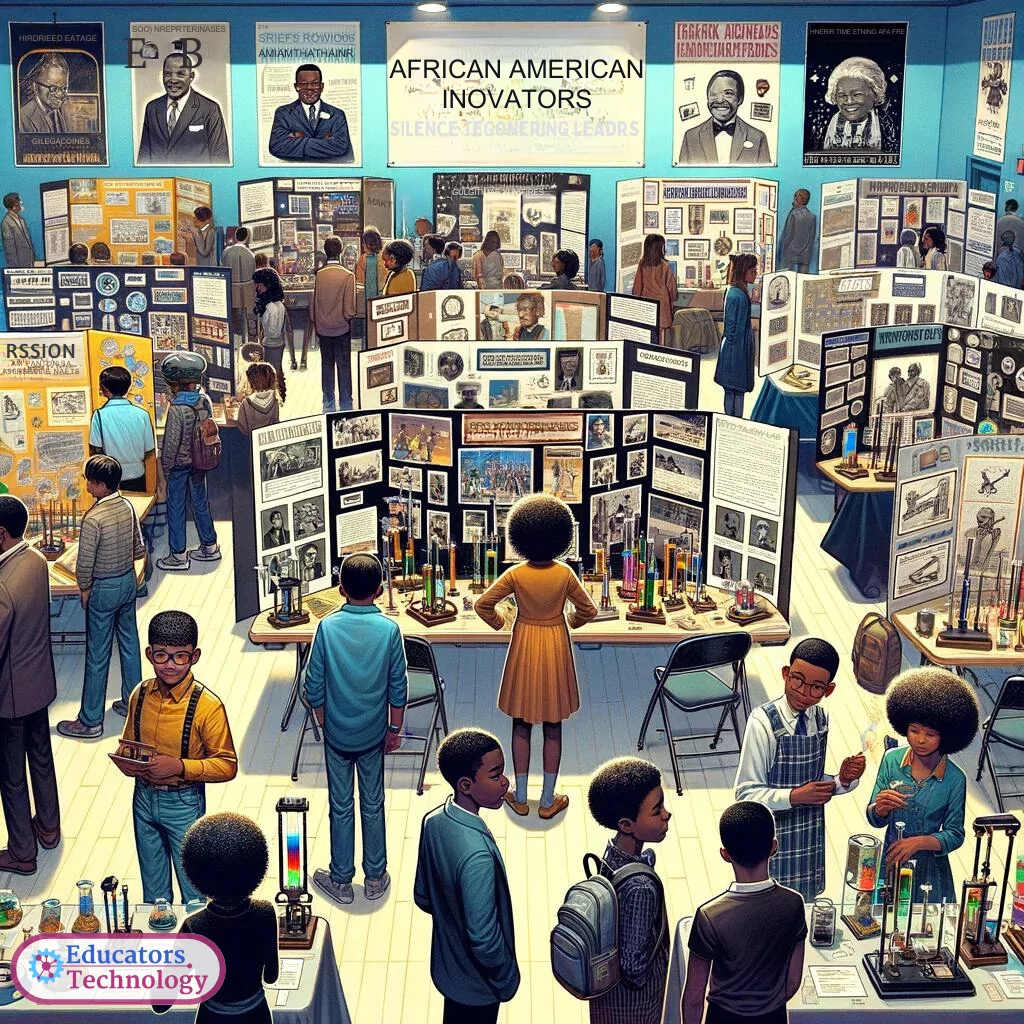
Create a science fair that focuses on the achievements of African American innovators and leaders in the fields of science, technology, engineering, and mathematics (STEM). Students can select an individual or invention to research and then present their findings through experiments, models, or presentations. This not only educates students on the significant contributions of Black professionals in STEM but also inspires them to pursue their interests and talents in these fields.
Related: Best TED Talks on Black History Month
8. Host Black History Month Performance Showcase
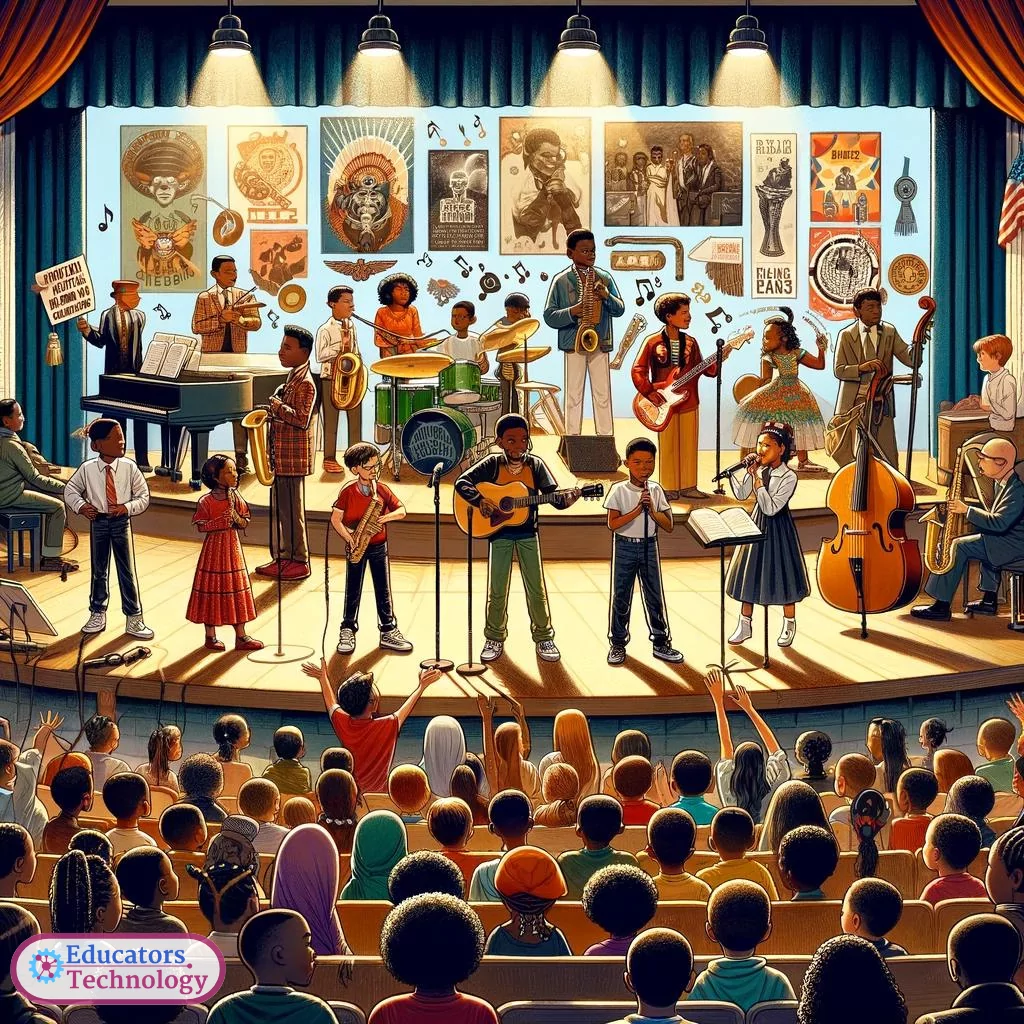
Host a performance showcase where students can express what they’ve learned about Black history through music, dance, drama, or spoken word. This could include reenactments of historical events, performances of civil rights movement songs, or original pieces created by the students themselves. Encouraging artistic expression provides a powerful avenue for students to connect with and honor African American culture and history.
9. Organize Interactive Workshops on African American Cultures
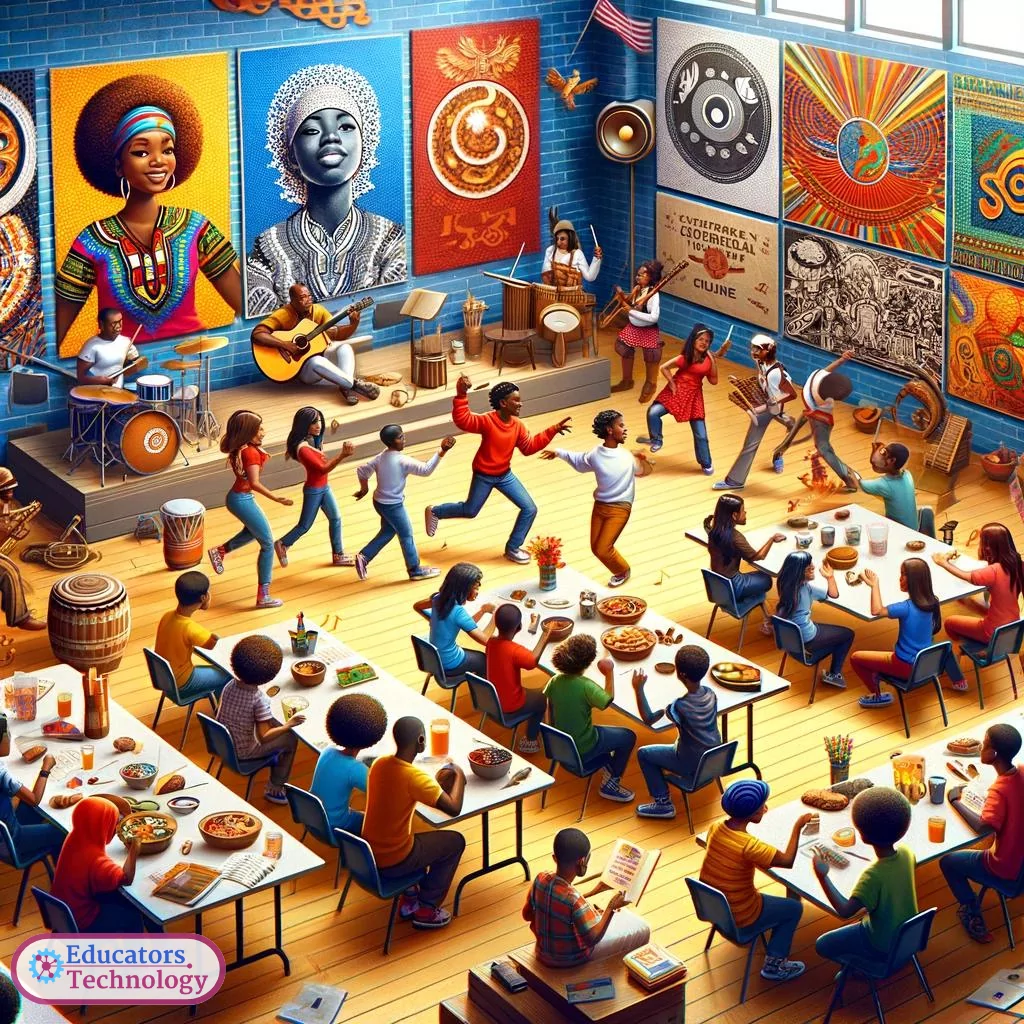
Organize workshops that explore the diversity within African American cultures, including sessions on traditional African dances, the history and significance of soul food, or the origins and impact of different musical genres like jazz and hip-hop. These workshops can be led by community members or school staff who have expertise in specific areas, offering students hands-on experiences that celebrate the rich cultural traditions of African Americans.
10. Take Virtual Field Trips to Historic Sites
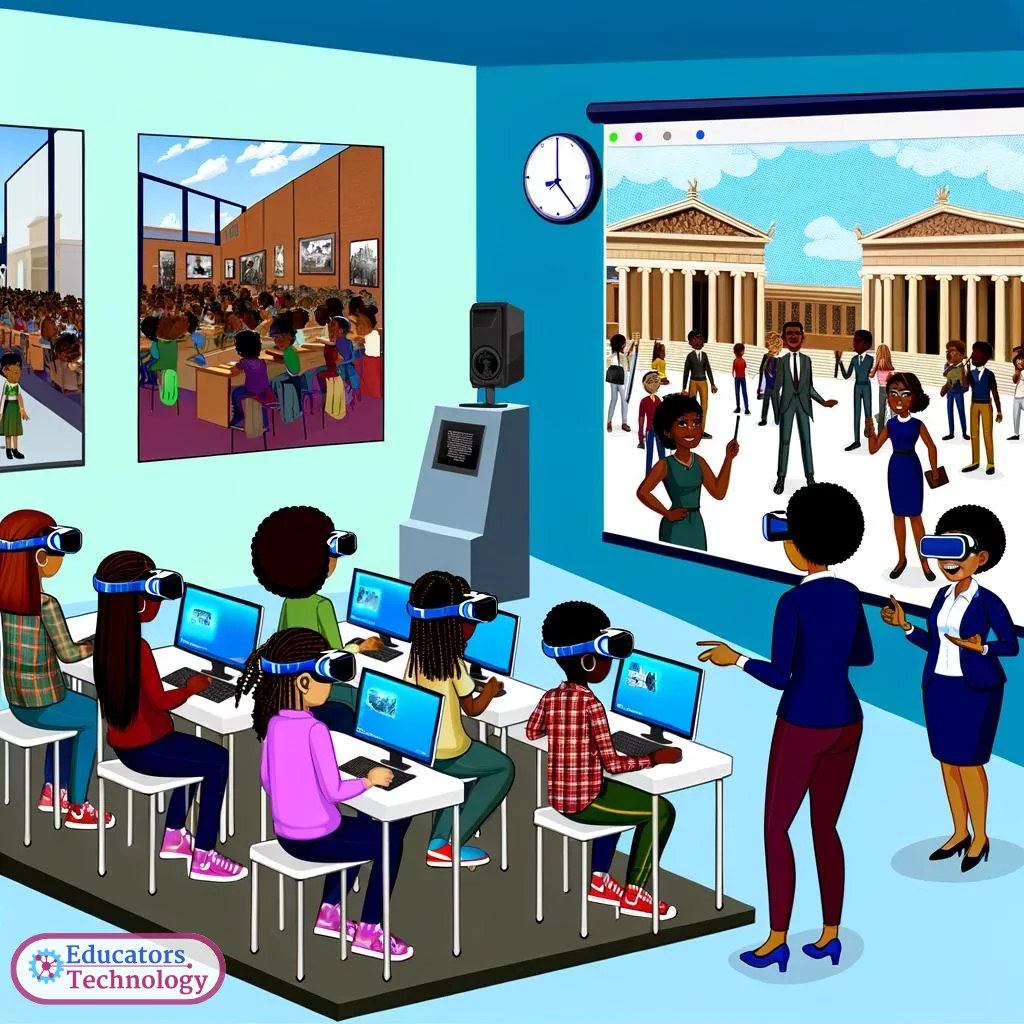
With technology, students can take virtual field trips to significant sites in Black history, such as the National Museum of African American History and Culture , the Martin Luther King Jr. National Historic Site , or other important monuments and museums across the country. Following the virtual tours, students can engage in discussions, write reflections, or create projects based on their experiences and the information they’ve gathered, helping to make history tangible and relevant.
Related: Black History Month Activities for Kids and Elementary Students
Final thoughts
Implementing these Black History Month ideas for schools can profoundly impact students, educators, and the entire school community. By dedicating time to celebrate and learn about the contributions of African Americans, schools can create an environment of inclusivity, respect, and appreciation for diversity. These activities not only educate but also inspire students to recognize the importance of Black history as an integral part of American history. From interactive exhibits and performance showcases to workshops that explore the rich cultural traditions of African Americans, each activity provides a unique learning opportunity.

Join our mailing list
Never miss an EdTech beat! Subscribe now for exclusive insights and resources .

Meet Med Kharbach, PhD
Dr. Med Kharbach is an influential voice in the global educational technology landscape, with an extensive background in educational studies and a decade-long experience as a K-12 teacher. Holding a Ph.D. from Mount Saint Vincent University in Halifax, Canada, he brings a unique perspective to the educational world by integrating his profound academic knowledge with his hands-on teaching experience. Dr. Kharbach's academic pursuits encompass curriculum studies, discourse analysis, language learning/teaching, language and identity, emerging literacies, educational technology, and research methodologies. His work has been presented at numerous national and international conferences and published in various esteemed academic journals.

Join our email list for exclusive EdTech content.
Black History Month Activities: Virtual Reality Activities for Students

Looking for immersive Black History Month activities for your students? Celebrate Black joy and Black excellence by exploring monuments, museums, art, and historical sites in virtual reality. These virtual field trips help kids and students increase engagement by giving them the opportunity to not just watch, but also interact with their environment.
Digital learning experiences let your students connect with important places and influential figures in Black history by engaging them in experiential learning. Kai XR’s field trips are powered by 360˚ technology that can be easily viewed in virtual reality or VR, an emerging tool with incredible learning and social-emotional benefits for kids.
VR refers to a fully computer-based recreation or simulation that immerses you in the subject. It’s typically viewed through a headset that creates a 3D digital world that simulates reality, and where you can explore so you feel you are really there. VR engages both your mind and your body, giving you the sensation of being immersed in an all-digital environment.
Virtual reality supports deeper learning. In fact, one study found that students who engaged with classroom content in VR were over twice as likely to pass a related test. The deep level of learning virtual reality helps students achieve also makes it uniquely well-suited to help them learn about history.
When students experience history in VR, it gives them a personal perspective on history and current events that a textbook could never impart. Students get a taste of exactly what it’s like in the world outside of the classroom.
VR field trips also leverage the benefit of using technology in the classroom, while simultaneously providing much-needed relief from “Zoom fatigue” and other digital learning woes. Kai XR is committed to making cutting-edge learning accessible to kids everywhere. Our virtual field trips are web-based and can be run on any device, including:
- Smartphones
- Laptop computers
- Desktop computers
- VR headsets
Our virtual field trips are educator-designed and have kid-approved content.
Each lesson comes with its own plan and discussion guide designed by educators for students, providing teachers with the assurance that all content offered through our interactive platform is engaging, educational, and age-appropriate for their students.

Technology and Learning in the 21st-Century Classroom
From smartphones to tablets, kids love technology . Incorporating tech into the classroom can support students and teachers in many ways.
Teaching with technology can both expand access for all students and make it easier for educators to differentiate content for the diverse needs of their students. It can help save precious classroom and planning time by increasing productivity. Educational technology can also allow teachers to demonstrate concepts with interactive digital tools, making their instruction more effective than ever.
Classroom tech doesn’t just make teaching more effective. It makes learning easier for students too. Technology heightens student engagement , which leads to better learning outcomes.
Today’s global society demands tech skills and higher levels of educational achievement. They need to learn for the future of work. To do so, many educators are exploring the use of tech like virtual reality and augmented reality to increase effectiveness of teaching and learning.
Using technology in the classroom helps students acquire other key 21st-century skills like:
- Encouraging digital literacy when students need to troubleshoot
- Fostering collaboration with multi-user experiences
- Utilizing critical thinking when applying what they have learned
- Practicing problem solving and decision-making in response to information
- Building social and self-awareness skills
- Increasing their curiosity, creativity, and independence at a young age
- Creating cross-cultural awareness
Technology helps students develop core competencies and improves their learning outcomes. Virtual reality takes these benefits to a new level, heightening student engagement and learning alike.

Black History Month Activities: Explore History with VR
Virtual reality can immerse students in learning, allowing them to have completely new experiences without leaving the classroom. The VR classroom offers novel learning experiences for students and yields many benefits, including:
- Better information retention in students
- Easily customizable lessons to meet diverse learning needs
- Multisensory experiences to drive learning
One of the most revolutionary ways to use VR technology is in teaching history. Virtual reality can make history less abstract, allowing students to experience significant moments, meet renowned figures who changed the world, and watch history unfold before them.
VR also enables various learning modalities, including virtual field trips. Field trips have long been known to enrich classroom teaching by providing a way for students to authentically engage with content, but they aren’t always feasible.
Cost constraints, transportation difficulties, and availability of relevant resources in the community are huge barriers to traditional field trips. With virtual reality, teachers can directly bring field trips into the classroom.
Accessibility
- Traditional Field Trips : Financial difficulties prevent many students from going on field trips. Others may have health concerns or mobility difficulties that make field trips inaccessible.
- Kai XR’s Virtual Field Trips : Virtual field trips help make experiential learning equitable, since they are accessible from any device and any location.
Availability
- Traditional Field Trips : Traditional field trips are limited by the locations and resources that exist in a student’s nearby community. Many are canceled due to the potential COVID-19 risks.
- Kai XR’s Virtual Field Trips : Over 100 virtual field trips are available through Kai XR. Students can explore places around the world from the safety and comfort of their home or classroom.
- Traditional Field Trips : It can be challenging for chaperones to monitor a large group of students, while also managing scheduling, student medications, allergies, emergency contact forms, etc.
- Kai XR’s Virtual Field Trips : A virtual field trip can fit into any available classroom time using any devices already on hand.
Black History Month Activities: Accessible, High-Impact, High-Tech Learning
VR field trips allow students to personally experience history from the classroom, making them ideal online activities for kids. Kai XR offers more than 100 lessons that combine the learning benefits of field trips and technological integration simultaneously.
These virtual field trips make experiential learning available to more students than ever. Kai XR is striving to break down educational barriers that keep students from equitable access to high-quality learning content. One of our goals is to build resources and tech that can empower educators in their mission to inspire our world’s next generation of innovators and creators.
We believe that intellectual curiosity is the foundation of a successful education, and that experiential learning like field trips can stimulate this curiosity. Our platform is web-based, meaning it can be accessed from any device. It meets the developmental and learning needs of students of all ages, and is guided by educators with student voice at the core of the design.
These resources can be used to supplement any unit or lesson, including Black History Month projects.
Kai XR’s virtual field trips are each paired with a viewing guide to help educators utilize these activities without adding to the burden of lesson planning. VR field trips can fit into any lesson or unit by:
- Introducing a new topic
- Piquing student curiosity and interest
- Fostering inquiry
- Supporting content with experiential learning
- Reviewing for tests
- Inspiring discussions
The flexibility of Kai XR’s virtual field trips comes in part from their ability to support a multitude of student needs and learning styles.
- Learning Styles : Virtual field trips simultaneously address visual, auditory, and kinesthetic learning styles as the immersive experience responds to student inputs.
- Language Acquisitio n: Exploring these experiences can help foster language acquisition by exposing learners to new vocabulary, making them excellent ESL Black History Month activities.
- Growth and Development : VR field trips support the concrete learning needs of young children by creating interactive environments for them to explore. At the same time, they can challenge older students to reason abstractly by encouraging investigation, inquiry, and analysis in an authentic experience.
Teaching Black History Month With Kai XR’s Virtual Field Trips
Here’s a comprehensive list of Kai XR’s virtual reality field trips that your students can experience on Black History Month and throughout the year:
- Martin Luther King Jr. Memorial Virtual Field Trip
Ruby Bridges Virtual Field Trip
Official obama portraits virtual field trip.
- The Obama White House Virtual Field Trip
Martin Luther King Jr. Memorial Virtual Field Trip
For elementary school students.
Dr. King’s achievements are a cornerstone of Black History Month curricula in many elementary school classrooms. We study his life to see the lasting effects that one person with a dream can bring about.
Exploring the Martin Luther King Jr. Memorial is a memorable Black History Month activity for children to help them understand the impact of his life.
Incorporate this virtual field trip into a character study of Dr. King. Elementary school students may enjoy completing a literary analysis of his “I Have a Dream” speech, or using it to create blackout poetry. They may enjoy listening to his speech while drawing a picture of the meaning they believe it holds.
Encourage your students to collaboratively create and add to working definitions of terms like “civic responsibility”, “perseverance”, and “leadership”. Look for examples of these traits in Dr. King’s life while reading his writings, speeches, or a biography about him.
Then, when exploring the monument, remind your students of the character traits they know that Dr. King possessed. Have them look for ways that his character is represented in his monument. End the field trip with a class discussion of why we memorialized Dr. Martin Luther King Jr., and why we still celebrate his work today.
For Middle School Students
To make this field trip a high-impact Black History Month activity for middle schoolers, have them work collaboratively to generate key themes about Dr. King’s life. They may identify these while reading biographies, speeches, and newspaper articles, and may notice more while exploring the memorial.
Encourage your students to think about the themes that the monument conveys. How does it show this theme? Then, as an assessment, have each student select a theme pertaining to Dr. King’s life to focus on.
Each student can then use multimedia presentation software to create a digital collage of images to represent that theme as part of Dr. King’s life. They may use specific sights they noticed from the memorial, pictures of Dr. King, or images of symbolic places and objects.
Your students may also want to revisit the memorial while working on these project-based assessments. This allows the virtual field trip to further serve as visual support while they demonstrate their learning.
For High School Students
Incorporate a virtual field trip to the Martin Luther King Jr. Memorial into your Black History Month lesson plans for high school students by using it to spark inquiry and discussion. Your students are likely already familiar with Dr. King’s life and work. Invoke their prior knowledge to launch a lesson or unit on civil rights leaders.
As your students explore the memorial in virtual reality, encourage them to write down observations and questions. They may also wish to write down connections between what they notice in the memorial and what they know about Martin Luther King Jr.’s life.
After allowing them time to explore, come back together as a class to share and discuss their observations. Additionally, use this discussion time to reflect on what they already know. Then, create a list of the inquiries they generated.
Use their list of questions as prompts for an independent research project, tying this immersive activity into a Black History Month writing activity.
Kai XR’s Ruby Bridges virtual field trip can help your elementary school students experience what Ruby and her family went through – their courage, perseverance, and resilience to see Ruby and future Black kids succeed. Students can see how segregation can impact even kids their age. Use this virtual field trip to open a lesson or unit during Black History Month.
Encourage your students to make observations about Ruby Bridges’ experiences at school and in her town. What do they notice about them that is different from our world today? Ask your students to discuss how schools and towns have changed since Ruby Bridges was a child.
During Black History Month, ask your students to independently select biographic texts or summaries of different civil rights leaders to complete book studies of. After they have read their books, have your students explore the Ruby Bridges virtual field trip.
While they do so, ask them to think about how Ruby Bridges’ story is similar to and different from the civil rights leader they read about. Consider what character traits, experiences, and values different civil rights leaders have.
Comparing the subject of their book study to Ruby Bridges will help your students think analytically about each person. Encourage your student to use their observations and connections from the field trip to help them plan an essay about their chosen civil rights leader.
Use Kai XR’s Ruby Bridges virtual field trip to conclude a unit or lesson on Black History Month and civil rights leaders. Before they begin exploring, pose them a simple question: Why do we celebrate Black History Month?
After the virtual field trip, allow students to discuss their responses to this question and to share their ideas about the importance of studying the difficult parts of our history. Then, engage your students in an arts-integrated, project-based assessment.
Challenge them to use digital resources to propose a monument to Ruby Bridges. They should include an explanation of the themes they chose to represent in their monument, and a discussion of how and why it honors Ruby Bridges.
This project will allow your high school students to show their understanding of Ruby Bridges’ experience and impact, but also of the significance of Black history as a whole.
Visiting the Official Obama Portraits gallery in virtual reality is both a cultural and historical learning experience for elementary students. Incorporate this virtual field trip into the end of a lesson or unit during Black History Month to prepare students for an artistic activity to show their learning.
While your students view the portraits, encourage them to talk with a partner and make observations. Provide them with discussion topics, including why these people had their portraits painted, how their portraits look, and what they notice about the portraits.
After this activity, have your students use what they noticed about the portraits of the Obama family to draw a portrait of a civil rights icon of their choosing. Then, encourage them to write a grade-appropriate response to tell about the person in their portrait.
Appeal to the curiosity of your middle school students by using this virtual field trip to open a lesson or unit during Black History Month. Begin by looking at other presidential portraits, then have your students explore the Obama portrait gallery in virtual reality.
Have your students write observations and questions during the virtual field trip. Afterwards, talk to your students about the significance of these portraits. How are they different from every previous presidential portrait? How are they different from the presidential portraits that came after?
Use this as an introduction to help your students connect to the importance of Black History Month and the civil rights movement today. This virtual field trip will help illustrate how much the world has changed over time, and how we are still working towards improvements today.
This virtual field trip to visit the Official Obama Portraits is a thought-provoking Black History Month online activity to use with high school students. Use this to support and develop a lesson or unit on the progression of civil rights to demonstrate how achieving equity for all is still a work in progress today.
Have your students explore the portrait gallery, and use it to spark discussion. Talk about what they think a presidential portrait gallery would have looked like 20, 50, and 100 years ago.
Then, encourage your students to think about what a presidential portrait gallery might look like in the future. Have your students create multimedia vision boards of what they think the future of civil rights will hold. Then, have them share these boards round-robin style in a small group of their peers.
To deepen their thinking even further, your students may enjoy listening to Kai XR’s talk on futuristic Black History for inspiration while working on their vision boards.
Immerse Your Students in Black History with Kai XR’s Virtual Field Trips
Educational technology is constantly creating new possibilities for educators. Innovations like virtual reality change the way we teach and the way kids learn. It can:
- Help students develop critical thinking
- Improve student technological literacy
- Form lasting memories of what students learn
- Break accessibility barriers to field trips
- Accommodate multiple learning styles and needs
VR gives our students new ways to connect with what we teach, making technology an especially powerful tool for teaching about history. Empower your students to break barriers in the classroom and beyond this Black History Month with Kai XR. Get started today by signing up for Kai XR. Have questions? Email us at [email protected] . We’re happy to help!
Share This Article
Subscribe for updates, table of contents, get started with kai xr.
There’s so much for you and your students to explore. All you need to do is start. Try out Kai XR on your smart device, tablet, VR headset, or laptop. We’ll be your guide!
Dive deeper into the metaverse, XR, VR, and all the tech bringing the next generation of learning to your classroom.

Celebrate Math & ELA with Kai XR this April
.png)
Take Your Women’s History Month Celebrations to the Next Level with Kai XR

Just for You! — Kai XR’s March Learning Activities


Interactive Field Trips Offered to Educators for Black History Month, President’s Day, Women’s History Month and Earth Day
The center for interactive learning and collaboration (cilc) provides new ways for teachers to inspire their students with virtual experiences.
In preparation for several upcoming significant historical, cultural and societal events, the Center for Interactive Learning and Collaboration (CILC) has curated a list of live, interactive virtual field trips that educators can access to enrich discussions surrounding Black History Month, President’s Day, Women’s History Month and Earth Day. The diverse list of interactive learning experiences ranges from an immersive underground railroad experience to an exploration of women war reporters who have made indelible marks in the world of journalism. Several of the offerings are free to the public, while others have a fee associated.
Virtual expeditions have gained in popularity in recent years and even more so since the start of the COVID-19 global pandemic. What sets CILC and its content collaborators’ programs apart from traditional web-based experiences (prerecorded) is the live interactive aspect. Museum curators, historians, authors, researchers, and other expert instructors engage directly with students during the virtual field trip to create a richer learning environment. The selections below offer an engaging resource to educators who want to expand their curriculum in a unique and authentic manner.
BLACK HISTORY MONTH, FEBRUARY 2021
Whether educators wish to celebrate African-American sports or take a deep dive into the Underground Railroad, educators will find an extensive list of programming experiences to reflect on the significant roles that African-Americans have played in shaping US history. A sampling of the programming available include:
- Underground Railroad Immersive Experience , Ohio History Connection
- Double Victory: African Americans in WWII, National World War II Museum
- African American Artists (free), Smithsonian American Art Museums
- It’s NOT Black or White: How a Museum Defines ‘Race’ ,
Cleveland Museum of Natural History
- African American Trailblazers (free), Pro Football Hall of Fame
PRESIDENT’S DAY, FEBRUARY 15, 2021
With interactive field trips, teachers have the ability to bring President’s Day to life by enriching the holiday with live programming for their students. A sampling of the programming available include:
- America’s Presidents (free), Smithsonian’s National Portrait Gallery
- Young Abraham Lincoln , Learn Around the World
- The Pursuit of Liberty: the Revolutionary War and the Founding of America, VA Museum of History and Culture
- Investigating the Lincoln Assassination with Detective McDevitt , Ford’s Theater
- George Washington and the French and Indian War (free), Fort Necessity National Battlefield
WOMEN’S HISTORY MONTH, MARCH 2021
Teachers looking for ways to provide fresh content when celebrating the vital role of women in American history can infuse new excitement within their students through well-known historians and experts A sampling of the programming available include:
- Women War Reporters: How They Wrote World “Herstory”, Authors on Call
- Votes for Women , MD Center for History & Culture
- Women’s History: Dirt on Their Skirts, National Baseball Hall of Fame
- Activism in the Suffrage Movement (free), VA Museum of History
- Women Who Paved the Way: Exploring Women Homesteaders and Suffragists (free), Homestead National Monument
EARTH DAY, APRIL 22, 2021
Educators can explore outside a school’s traditional curriculum setting to experience a day that promotes environmental awareness and calls for the protection of our planet. A sampling of the programming available include:
- Earth Day: Preserving Our Most Precious Resource , SOITA
- Sustainable Solutions: Bioenergy and Bioproducts (free), Creative Discovery Museum
- Exploring Earth Science , Cleveland Museum of Natural History
- Planet Earth , Royal Tyrrell Museum of Paleontology
- Earth is Worth It !, East Central Ohio Ed. Service Center
Teachers, school administrators, parents and childcare professionals are encouraged to browse CILC’s complete library of programs or register for a free membership at cilc.org .
About The Center for Interactive Learning and Collaboration
The Center for Interactive Learning and Collaboration (CILC) was founded in 1994 as a nonprofit organization with a mission to connect K-12 schools to national and international museums, zoos and other cultural organizations. CILC was developed for teachers to easily identify quality educational programs and interactive virtual experiences. To date CILC has nearly 200 content providers, which offer standards-driven authentic, live programs evaluated by teachers for teachers. Through interactive learning and collaboration, providers help to expand opportunities for students of all ages to learn through engagement with more than 1,900 professionally delivered programs. For more information about how cultural organizations are considered for CILC’s programming or to incorporate into a school’s curriculum, please visit https://www.cilc.org/ .
- Recent Posts
- AI-Enabled Personal Professional Learning MicroGrant Winners Announced - April 26, 2024
- Educators Honored with YouScience® Innovative Educator Award - April 25, 2024
- CIESC Member Schools Gain Access to Metrasens Ultra Weapons Detection Systems Through New Partnership - April 24, 2024
Want to share a great resource? Let us know at [email protected] .
Username or Email Address
Remember Me
eSchool News uses cookies to improve your experience. Visit our Privacy Policy for more information.
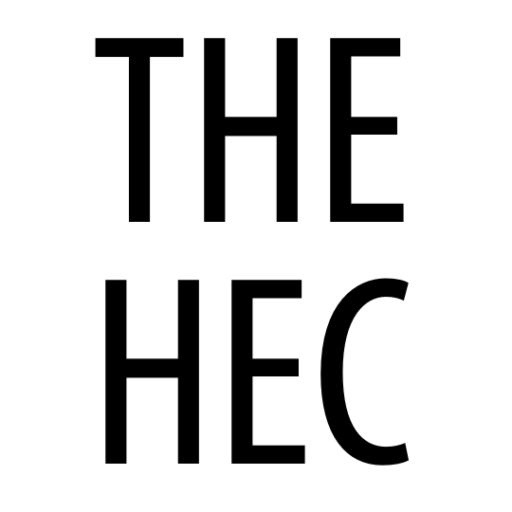
Black History Month Field Trips
The harlem edutainment company (hec) offers cost-effective, quality, and easy-to-plan school field trips..
Black History Month was originally created in 1926 by historian, Carter G. Woodson, who deemed the second week of February to be “Negro History Week.” This week was chosen because it coincided with the birthdays of Abraham Lincoln (Feb. 12th) and Frederick Douglass (Feb. 14th), both dates being celebrated together by Black communities since the late 19th century. In 1969, Black educators and the Black United Students at Kent State University proposed a “Black History Month” in February 1969. Seven years later, in 1976, Black History Month was officially recognized in the United States by President Gerald Ford. Learn more about Black History Month here .
The HEC offers a variety of field trips and educational activities during Black History Month. Our Black History Month field trips help students continue the tradition of recognizing the achievements of Black Americans. Whether it is touring the African Burial Ground and discovering the contributions that Africans made in building New York City, or visiting the Apollo Theater and learning about the musical greats who got their start at the historical theater, the HEC helps bring Black history to life for students in a fun and educational way.
BLACK HISTORY TRIP A:
Historical aspects of harlem.

This field trip package involves seeing sights such as the Cotton Club and Striver’s Row in Harlem, as well as an in-depth tour of the Apollo Theater. The experience also includes an authentic Soul Food lunch at one of Harlem’s famous restaurants.
- Historical Harlem Tour
- Apollo Theater Tour
- Soul Food Lunch
Price: $65/person Duration : 4 hours
BLACK HISTORY TRIP B:
African history and culture.

This field trip package allows guests to experience the history and culture of African-Americans in NYC from the earliest days of slavery to the emergence of Black culture as a prominent fixture in the United States.
- African Burial Ground
- Schomburg Center
Price: $45 Duration : 4 hours
BLACK HISTORY TRIP C:
Hip-hop dance and music.

This field trip package provides a behind-the-scenes tour of an authentic hip-hop music studio where some of the world’s most famous hip-hop and R&B artists have recorded their work. Guests also partake in an interactive hip-hop dance workshop, and conclude the day with a meal at Applebee’s in Times Square.
- Music Studio Tour
- Hip-Hop Dance Lesson
- Lunch at Applebee’s
Book a trip to secure your spot today!
You can also create your own trip if the options above don’t meet your needs..
- Canada Us Free Trade Agreement News
- Free Nt Rental Agreement Forms
- Marriage without Agreement
- Reciprocity Tuition Agreements California
- What Did China Agree to in the Paris Agreement
- Landlord Tenant Guarantor Agreement
- Personal Injury and Settlement Agreements
- Lease Termination Agreement for Trucking Owner Operator
- Nj Realtors Hold Harmless Agreement
- What Is a Contract Phone Plan
- Which States Have Reciprocity Agreements with North Carolina
- High Low Settlement Agreement
- Standard Employment Agreement Ontario
- Independent Contractor Agreement for Janitorial Services
- Powerlink Network Operating Agreement
- Commercial Real Estate Contracts
- Binding Agreement between Two Parties Template
- Federal Government Service Contract Act
- What Is an Adjustment Agreement
- Amc Contract Agreement
- Upcoming Events
- Get Tickets

- Tickets & Hours
- Parking & Directions
- Accessibility
- AWM Exclusives
- Watch Past Events
- American Writers Festival
- Venue Rentals
- Adult Group Experiences
- Corporate Experiences
- Field Trips (K-12)
- In-Person Permanent Exhibits
- In-Person Temporary Exhibits
- Online Exhibits
- Book Club Reading Recommendations
- AWM Author Talks
- Nation of Writers
- Dead Writer Drama
- Affiliate Museums
- In-Person Field Trips
- Virtual Field Trips
- Resources by Grade Level
- Resources by Exhibit
- Inquiry-Based Curriculum
- Using Primary Sources
- Educational Updates
- Current Competition
- Past Winners
- My America Curriculum
- Dark Testament Curriculum
- Donor Societies
- Apply to Volunteer
- OnWord Annual Benefit
- Planned Giving
- Sponsorship
- History & Mission
- Diversity & Equity
- National Advisory Council
- Curating Team
- Board of Trustees
- Jobs & Volunteering
February 2023: Black History Month Themed Field Trip
February: Black History Month
Celebrate Black History Month with an in-person field trip to the American Writers Museum this February! Our field trips will explore the influence of Black writers on American history and literature. Students will receive a 15-20 minute introduction to the museum that will demonstrate how Black authors are displayed throughout our interactive exhibits. Educational activities and a post-field trip discussion will help engage students with the topic of racial identity.
Will be available the following Wednesdays and Thursdays in February: 2/1, 2/2, 2/8, 2/9, 2/15, 2/16, 2/22, 2/23
Field Trip Rates
In-Person Trips – $7/student & teacher (adult chaperones free)
Subsidies available for resource-challenged schools, please indicate interest in the “Additional Comments” section of the form.
- A non-refundable 20% deposit is required on booking, and the full balance is due before or on arrival.
- 15 student minimum to qualify for reduced rates
- One adult chaperone is required for every 8 students
- Search for:
Username or email address *
Password *
Remember me Log in
Lost your password?
SIGN IN YOUR ACCOUNT TO HAVE ACCESS TO DIFFERENT FEATURES
Forgot your details.

- MY CART No products in cart.
- What is Homeschooling?
- But Am I Qualified?
- School Closures
- TryHomeschooling.com
- Am I Qualified to Homeschool?
- Considering Homeschooling?
- Hey, Mama! Homeschool Show
- THM Archives
- Need a Speaker?
- Schoolhouse Devotions
- Annual Freebie Directory
- Resource Guide
- Spotlight on Academics
- Homeschool College Directory
- HomeschoolingFinds.com
- Homeschool Help and Articles
- Excellence Awards
- National Academic Homeschool Competition
- Support Group Leaders
- Schoolhouse Ambassadors
- SchoolhouseTeachers.com
- Magazine Library–20 Years of Issues
- Read the current issue of The Old Schoolhouse® Magazine
- Get the Homeschool App–Start Here to Homeschool
- You Are Not Alone digital magazine supplement
- From ABC’s to SAT’s – Summer 2019 Digital Supplement
- Magazine Columnists
- Magazine FAQ
- Writer’s Guidelines and Upcoming Themes
- How to Write for TOS
- Terms and Conditions for Writers
- How to Submit a Query
- Advertise With Us
- Homeschool Stats
- Privacy Policy
- Terms of Use
- Statement of Faith
- Mission Statement
- Testimonials
- Gena Suarez and Our Story
- Advertising
- Customer Service
- The Homeschool Minute
- Website Admins
- Welcome State Homeschooling Boards
- Our Sponsors
- Help Wanted
- Homeschooling with Heart Blog
- Our Blog Writers
- Try Homeschooling
- TheHomeschoolMinute.com
- HomeschoolingFinds
- SchoolhouseConnect.com
- Sell to Homeschoolers
- Mobile Apps
- Homeschool Store
- Track your order
Black History Month Field Trip Ideas

Share this post:
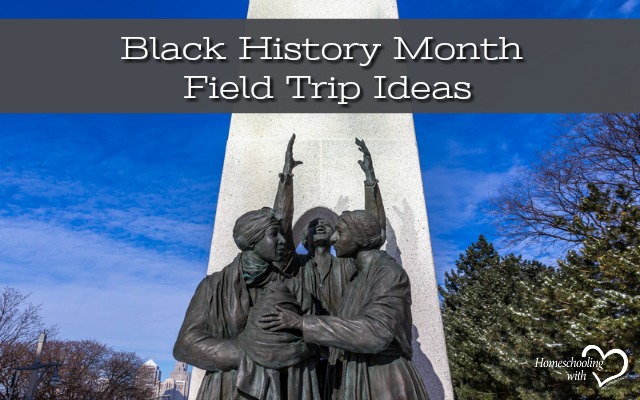
From the time I was a little girl I was aware that while children of all colors lived and went to school together in Canada where I lived, this was not always the case in the country we often visited, the U.S.A.
I can remember asking my mom why the elderly lady had to sit all the way back with her shopping bags when it would have been so much easier for me to do with my six-year-old’s legs. I was told to shhh, she would explain it to me later. And try to explain she did, but it was still tough for me to understand. I grew up knowing that God loves everyone so why were some folks treated differently.
One of the benefits of homeschooling for us is that we can travel and expose our young student to historic places and help him to develop a better understanding of what has gone on in the past so when Black History Month comes up, we try to plan some special visits plus go through photos and memories of previous spots where we have learned about this history.
One of our favorite visits was to the Jean Lafitte National Park French Quarter Visitor Center. Here we not only learned about the history of the area but also about the landmark decision in 1896 on Plessy v. Ferguson. This decision by the U.S. Supreme Court created the “separate but equal” doctrine that basically legalized segregation under certain circumstance.
Another National Park spot we visited was Vicksberg National Battlefield where we learned about the Bureau of Colored Troops and the sacrifices that both escaped slaves and free black men made to the war effort.
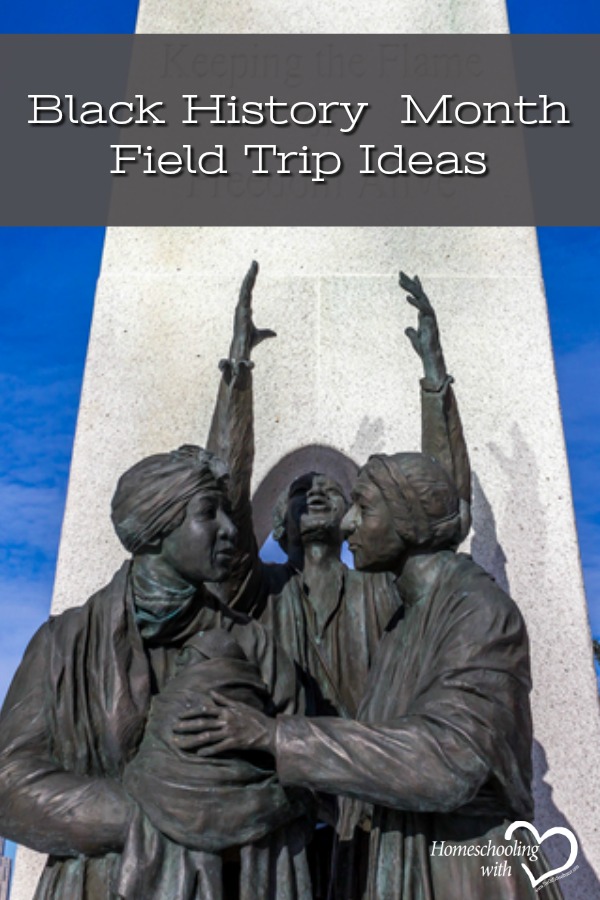
We have traveled through areas of plantations and seen slave cabins and learned about what life was like for those who toiled in the fields for their masters. We also learned about heroes like Harriett Tubman and Frederick Douglas who rescued those souls through the Underground Railroad.
There is also much to learn about the Underground Railroad in Canada where you can visit some of the stations that have turned into museums. If you are in Ontario, you will find at least five locations.
Moving further into the future, we’ve made road trips along the United States Civil Rights Trail. This one is a bit much to do on one trip so best to break it up into smaller regional trips if you can. There is much to see and learn and nice to see it all pulled together. The website is terrific with lots of information and background for your studies.
During our visit to the Canadian Museum of Human Rights, we heard the story of Viola Desmond, the businesswoman who challenged segregation in a movie theatre in Nova Scotia by refusing to leave her seat in the white-only section. She was actually convicted of a tax violation since the ticket she purchased was one cent less than the one for the section she sat in. Viola was recently honored by being placed on the Canadian ten-dollar bill. A great way to help keep her memory alive for future generations.
Stories like this are fascinating for kids and help keep them interested in learning about history.
Kimberley Linkletter – After a 20-plus year career in politics and government, my life took a turn and I became a homeschooling gramma to our energetic and adventurous grandson EJ. There is nothing we like better than loading up our car and hitting the road to see what we can see. As my girls have always said, “Mom says everywhere is on the way to somewhere,” so we love to take detours along our route. You find some of the best places that way!
We keep busy reviewing homeschool products, visiting small town (and not so small town) diners and cafes, museums, National Parks, hotels, and campgrounds.
EJ and I (Miss Kimmy to my friends) love to share our adventures with you here on Vintage Blue Suitcase.

Leave a Reply Cancel reply
Your email address will not be published. Required fields are marked *
Save my name, email, and website in this browser for the next time I comment.
This site uses Akismet to reduce spam. Learn how your comment data is processed .

SHARE TOS ON YOUR PAGE!
GRAB OUR BUTTON HERE-
HwH Blog Categories
Their first preacher, in 1847, was Henry Ward Beecher. Walt Whitman was a fan of Beecher's sermons, as was Abraham Lincoln (you can find the pew where he sat in 1860, marked with a plaque). Other guest speakers included: Sojourner Truth, Frederick Douglass, Booker T. Washington, Mark Twain, and Charles Dickens, and (much later) the Rev. Dr. Martin Luther King, Jr. Tours are available by appointment, call 718-624-4743, FREE. Afterward, if the weather's good, stroll over to the Brooklyn Heights Promenade, a great place to sit and eat lunch. If it's freezing, try the soup at Siggy's Organic Cafe on Henry St. right around the corner from Plymouth Church.
The Weeksville Heritage Center in Brooklyn is a museum that has perserved one of the first free Black communities in the USA. They give tours of historic houses from the early 1900's where African-Americans lived for generations.
In Harlem, the Schomburg Collection in the NYPL offers exhibits and archives that chronicle Black American History. Check for events and current exhibitions . Black Life Matters runs through Aug. 15, 2015.
The Studio Museum in Harlem is a center for African-American artists with changing exhibitions and workshops for all ages. Free on Sundays.
In Queens, the Louis Armstrong House offers guided tours, group rates available. The house where Louis Armstrong lived is now a museum, depicting the life of this great American jazz pioneer, and celebrating his genius.
In Nassau, on Long Island, there is an African-American Museum that focuses on history, art, culture, and education. They offer tours, genealogical research, and hands-on art workshops on Saturdays for all ages.
The African Burial Ground in lower Manhattan was discovered in 1991 during excavation work for a new federal building. Originally located outside the boundaries of New Amsterdam, hundreds of free and enslaved Africans were buried here during the 17th and 18th centuries, in unmarked graves. Today the site is a memorial, with an interpretive center next door at 290 Broadway, open Monday – Sunday 9 – 5.
Beyond Swastika and Jim Crow: Jewish Refugee Scholars at Black Colleges is on view at the Museum of Jewish Heritage through February 21st. This exhibit tells the story of Jewish professors, scientists and scholars who fled the Nazi regime and found refuge in black colleges in the segregated south. The museum is located in Battery Park, at the southern tip of Manhattan. If the weather is nice, wander behind the museum to view the harbor or have a picnic lunch.
The N-Y Historical Society, located at W. 77th St. and Central Park West, has online exhibits on the Civil War Lincoln and New York , and New York Divided about slavery and the Civil War in New York.
Perhaps the greatest collection of Black Culture and History in NYC is at the Schomburg branch of the New York Public Library in Harlem. Their collection includes watercolors by a five-time winner of the Caldecott award for children's book illustrations, in an exhibit called Jerry Pinkney's African-American Journey to Freedom . Also on display are photographs of Barack Obama's first year in office .
Columbia University undertook a project to map the African American past in New York City. From 1632 to the present, MAAP (Mapping the African American Past) has archived photographs and mapped locations paired with lesson plans. Create your own walking tours, or browse through history from the comfort of your computer.
African-American History Books for Kids
Other books:.

Black History Month Virtual Field Trips for Spanish Class
February is Black History Month, and with that comes the responsibility to highlight the achievements and culture of the black community. In Spanish class, that means shedding light on (the sometimes overlooked) Afro-Latino culture. While we should all arguably be teaching and sharing aspects of Afro-Latinidad all year, don’t let that stop you from taking the month of February as a quick reset to get these issues on your mind and in your lesson plans.
These Black History Month virtual field trips for Spanish class are a great way to honor Afro-Latino culture and share its significance with your students.
Before we get started let’s have a quick refresher on what Afro-Latino means.
What does Afro-Latino mean?
Afro-Latinos are people of African descent who are also Latino. The term developed because many people (to this day) like to box in other’s identities as either only black or only Latino.
The term also developed because of issues with colorism and racism against Afro-Latinos within Latino communities. This is evident in the way that light skin and straight hair are praised while dark skin and textured hair are not.
You don’t have to get into the specifics with your students, but it’s important to be aware of these complexities. As teachers and parents, it needs to be on our minds if we are truly going to honor and celebrate Black History Month.

That being said, these Black History Month virtual field trips are a vibrant mix of what it means to be proudly Afro-Latino. Kids will find the music, dancing, food, and places in the resources below both informative and entertaining.
And if you’re coming across this article in any month that’s not February: share it, read it, and use the resources. Remember, this is an all-year-round kind of thing.
#1 Black History Month in Latin American Countries
First up is this video (in English) listing the dates that Latin American countries celebrate their own versions of Black History Month throughout the year.
It’s a tad too informational for younger students, so it’s better received by older students, parents, and teachers looking to learn more about Afro-Latino celebrations.
#2 Puerto Rican Bomba
Moving on to something more musical is Puerto Rican Bomba.
Bomba is an improvisational dance and style of music created by African slaves brought to the island. Over the years, it became a sign of rebellion but has now transformed into an important right of expression and celebration of Afro-Latino roots.
Apart from its historical significance, what makes Bomba so interesting is that it’s a conversation between dancer and drummer. While both improvise, it’s the drummer that follows the dancer’s lead.
Have kids learn about Bomba in the video above. (It’s in Spanish with English subtitles.) They can also learn how to dance Bomba, here . The dance video is in English and teaches Spanish vocabulary.
#3 Ingrid Silva
Next, take a trip to Rio de Janeiro and New York with this short film based on Afro-Latina ballerina, Ingrid Silva. Told from Silva’s point of view, viewers quite literally walk a mile in her shoes.
Ingrid Silva, who is a fantastic role model kids can look up to, now dances with the Dance Theatre of Harlem in New York City. She’s been outspoken about the need for more diversity in ballet.
Since Silva is Brazilian, the dialogue is in English and Portuguese, but it takes a backseat to the imagery and music. You don’t need to understand either language to feel moved by the nearly 5-minute film. This is great to use as a conversation starter.
#4 Gaspar Yanga
In another trip based on an inspiring Afro-Latino role model, kids can travel to Mexico and learn about Gaspar Yanga.
He was a West African prince who led a revolt against the Spanish. His bravery and leadership led to the independence of one of the first free African settlements in the Americas. The town is now called Yanga.
Use Yanga’s bravery as a shining example of an Afro-Latino hero for young children. Older elementary and above can watch the video (in English) to learn more about Yanga’s story.
Now make your way to Peru with this (free!) Teachers Pay Teachers mini-lesson from World Music with DARIA that explores the Quijada, a musical instrument made from the jawbone of a donkey.
It originated in Africa and was brought to the Americas during the colonial era. It’s played in many parts of Latin America but is most connected with Afro-Peruvian music.
Kids can all about it before making their own Quijada from recycled materials. The lesson can be used from PK-4th grade.
#6 La Borinqueña
Onwards to Puerto Rico and New York, where the world’s first Latina superhero, La Borinqueña, calls home. La Borinqueña is an Afro-Puertorican activist who receives her powers after her first trip to the island.
With how popular superheroes always are, kids will be immediately drawn to the comic.
Keep in mind it does deal with heavy topics like the Puerto Rican debt crisis and U.S. colonialism. Both are important issues that can be brought up with older elementary students in an age-appropriate way.
However, the real value here, is kids seeing a superhero that is proudly Afro-Latina. Students can create their own superheroes or comic strip as part of your lesson.
#7 Palenque
Similar to Yanga, San Basilio de Palenque in Colombia is thought to be one of the first towns in the Americas freed from slavery.
Students can take a Black History Month virtual field trip to the town and meet palenquera Everlinda Sagrado Herrera.
The video is narrated by Everlinda in Spanish with English subtitles.
#8 Batá Drums
Thanks to the Smithsonian Latino Center, students can travel to Cuba (via Miami) and learn more about Afro-Cuban drums called Batá.
They are a set of three drums that originated in Nigeria and are now used in Cuba, Puerto Rico, and the US. With one end larger than the other (like an hourglass) the Batá drum is placed in the drummer’s lap while they play.
Learn all about the drums, their parts, and it’s significance for religious ceremonies here . The video is narrated by a Batá drummer and drum maker. It’s in Spanish with English subtitles.
It may be a lot of information to take in for younger elementary students, but they will still be captivated by the different drums and music played throughout the video.
#9 Garifuna
Our final trip takes us to Honduras in another free Teachers Pay Teachers resource by All Around This World . The Garifuna are the descendants of Afro-Caribbean and indigenous Arawak people. Many Garifuna moved from St. Vincent—an island in the Caribbean—to settlements in Honduras, Belize, Nicaragua, and Guatemala.
The resource is a mini-lesson that includes a PDF, video, and a song that teaches kids about the Garifuna people. The lesson is intended for grades K-3.
What Black History Month Virtual Field Trips will you use?
There is so much complexity within what it means to be Latino, that we need to be sure to include Afro-Latino culture in order to do it justice. These virtual field trips are a great step to get you started.
If you would like more resources to keep the learning happening all year long, join the Incorporating Afro-Latino Culture in Spanish Classrooms Facebook group.

You can also check out these inspiring books that promote tolerance and diversity and this interview about using diverse books in the classroom.
Share this:.

You May Also Like

Take a Hispanic Virtual Field Trip Around the World!

Virtual Field Trips to Spain for Kids

5 Thanksgiving Virtual Field Trips Your Kids Will Love
Wayneicia James
Awesome! I hope it’s useful!
Virginia Educator Leverages Field Trips To Educate Black Students On State's Historical Ties To American Slavery
These students learned about the birthplace of American Slavery in class. Then, their history teacher took them there.
Madeline Holly-Carothers • Apr 23, 2024
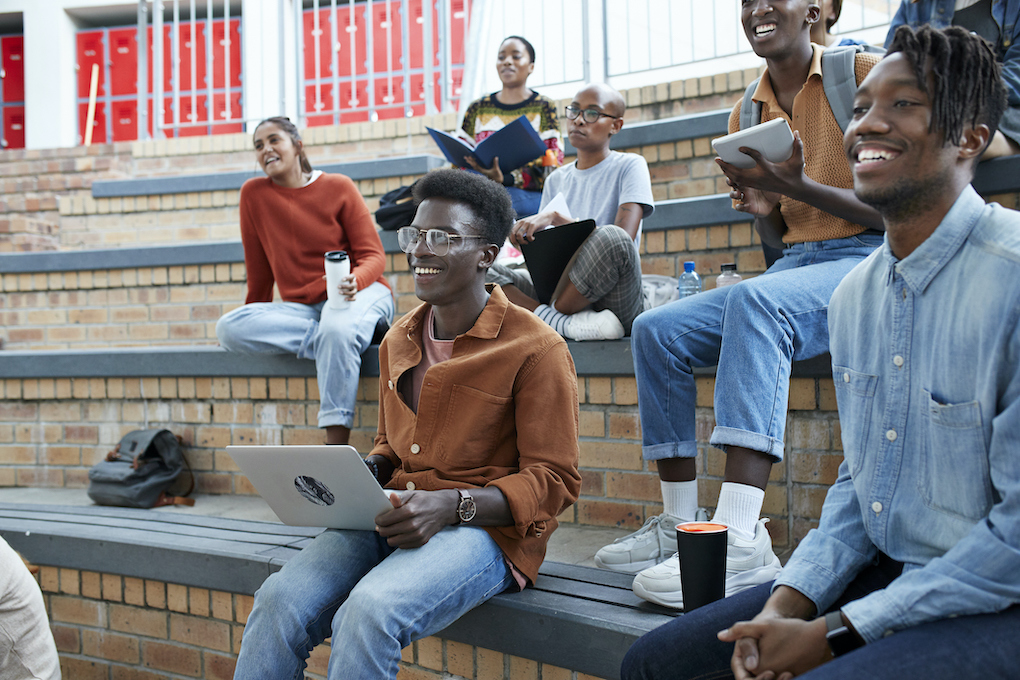
A history teacher in Virginia recently took his class deeper by taking the class to where slavery began in the United States.
The Norfolk, Va., teacher took a group of 22 students to Fort Monroe in Hampton, Va., where the first enslaved Africans arrived, with hopes of helping his students create a more meaningful connection to what they learned at school.
“When your school is 20 minutes from this historic place, it makes sense to take them there so they can see it and feel it. It makes a big difference,” Allison told NBC News.
Experiential Learning as a Foundation
Edwin Allison, described by NBC News as a “veteran history teacher,” took an Advanced Placement African American Studies class from Granby High School in Norfolk to the site of the first recorded slave ship entered the U.S. — then known the Americas, or “the colonies.”
The history teacher has a long resume of education, with more than 25 years at Granby. Known for his dedication to history and pouring into his students in unique ways, in 2008, then-presidential candidate Barack Obama visited Allison’s class.
Experiential learning seems to be part of Allison’s core teaching principles.
“Teaching is a blessing for me,” Allison told NBC News. “When kids come back 10, 15 years later and say ‘Mr. Allison, you were a part of my success,’ that’s powerful.”
On-Site of History
The group crossed the grounds of Fort Monroe where the first enslaved people arrived. One student described feelings of discomfort and surrealism upon arriving at the site.
Allison’s field trip increased the impact of lessons previously taught in this class. The students had previously talked about the generations of slavery and its impact on Black Americans.
The field trip, was controversial though, for some.
AP African American Studies focuses specifically on Black Americans, their struggles, and contributions to society, and more. The class’s existence had been muddled with disputes from the start of the idea. Many conservatives don’t believe the class should be offered at all.
And in Virginia, the state’s governor, who initially “ordered that the pilot program be reconsidered,” allowed it to continue to the schools.
Allison’s field trip was important, regardless of the present attacks on Black history in schools. He said that the site being so close to his close was something that his students should see.
Lasting Impact
For Alexander, the experience of standing at the site where generations of enslaved people had been brought against their will was eye-opening.
Other classmates noted feeling inspired and grateful to be who and where they are now.
Subscribe to travel noire
Get more travel content
Subscribe to Travel Noire, a free daily newsletter that features the best of travel, destinations, and guides to the cities you love from a new point of view — yours.
By subscribing to this newsletter, you agree to our terms of service and privacy policy.
Popular posts
Trending stories in world travel
Momma Wanderlust - Curating Cultural Travels for Families

12 Black History Museums You Can Explore from Home
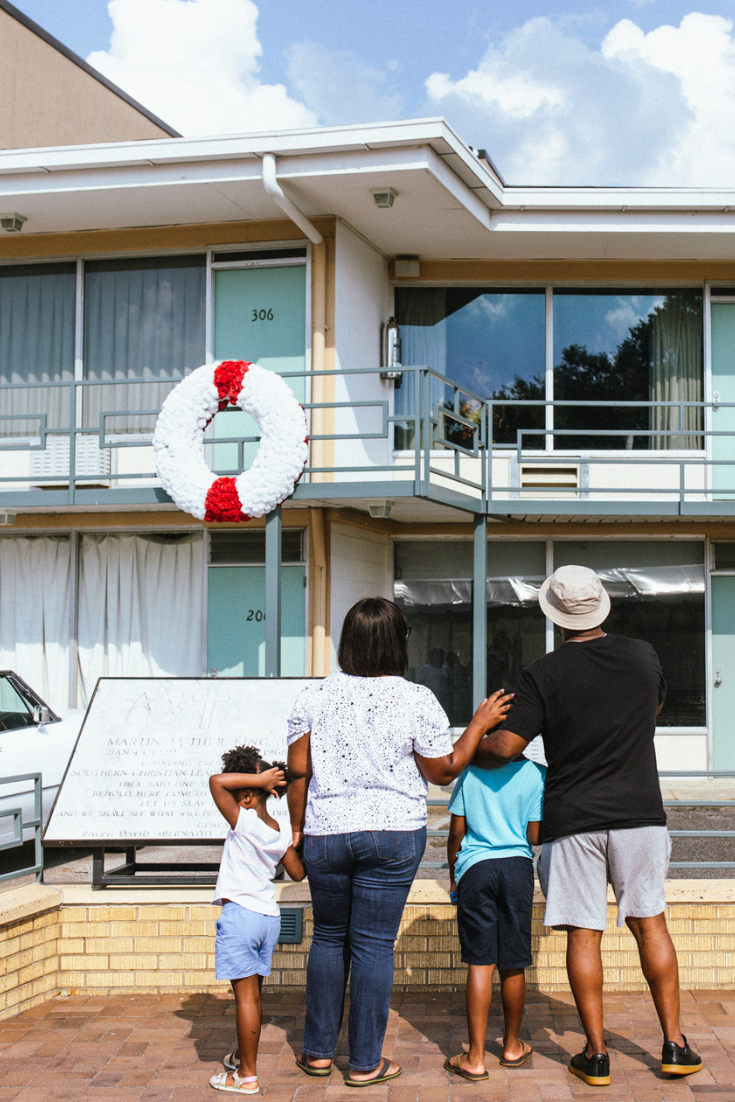
Looking for Black History Museums you can explore from home? The Black experience is so vast and varied that there’s no end to what can be learned about it. This is why when I travel, I visit local African-American History Museums to get a better feel for a new destination. On a trip to Georgia, my family and I visited the Jack Hadley Black History Museum and learned first-hand what it was like for the museum’s curator, Mr. Hadley, to grow up on a plantation.
But you don’t have to travel to explore some of the best exhibits in the country. Thanks to technology, you can visit some of them virtually . If you’re interested in learning more about African American history and culture in the United States, there’s a bevy of museums and resources available online.
Google Arts & Culture and the United States Civil Rights Trail provide virtual tours, exhibits, and access to online archives that you can explore from home.
Here are some African American History and Civil Rights Museums that you can explore from home:
12 AFRICAN AMERICAN BLACK HISTORY MUSEUMS TO VISIT VIRTUALLY
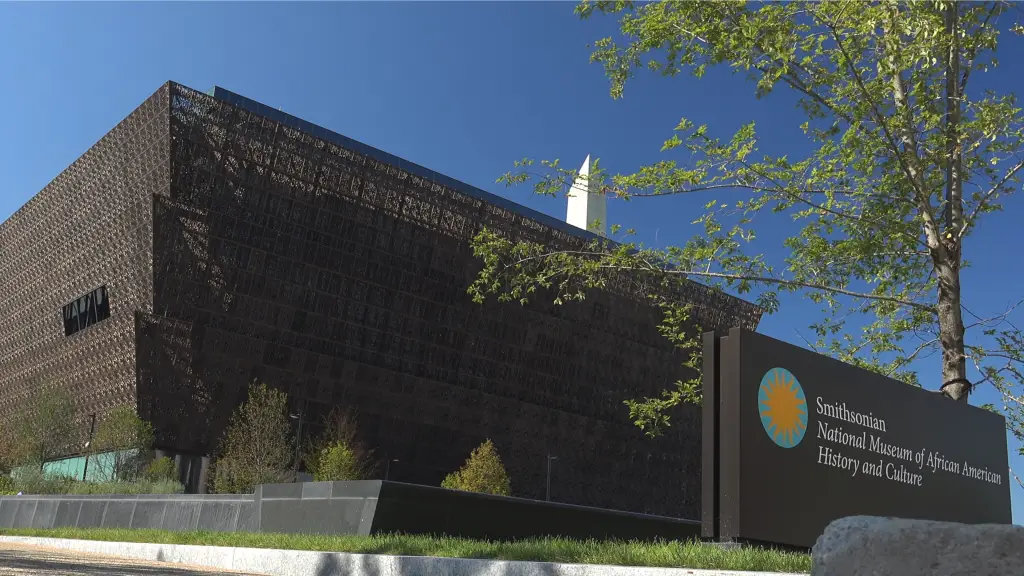
National Museum of African American History & Culture Courtesy: bakdc/ Shutterstock
You can find a complete list of all the virtual tours offered by Google Arts & Culture here .
Smithsonian National Museum of African American History and Culture (Washington, DC)
Since opening in 2016, the Smithsonian National Museum of African American History and Culture has become one of the most popular museums in Washington, DC. Visitors are educated about the Black experience by going on a trip through time. The journey starts in Africa with its history galleries that span from Slavery to Emancipation and then from Segregation to Today. More than 3,500 exhibits are available online.
Archives of African American Music & Culture (Bloomington, Indiana)
The collections in the Archives of African American Music & Culture museum highlight African American music ranging from classical, and religious, to popular music including R&B and Hip Hop.
The Museum of African American Art (Los Angeles, California)
The Museum of African American Art interprets, promotes, and preserves art by or about people of African descent. It was founded in 1976 to increase public awareness of African American Art.
The Gordon Parks Foundation (Pleasantville, New York)
You can take a trip through time with the life work of famed African American photographer, Gordon Parks. The Gordon Parks Foundation showcases Parks’s career, which spans from the 1940s up until his death in 2006. Parks’ photographs focused on race relations, Civil Rights, and urban life.
Dance Theater of Harlem (New York, New York)
The Dance Theater of Harlem is the first Black classical ballet company and the first major ballet company to prioritize Black dancers. This school was founded more than 50 years ago. There are four online exhibits about the history of this world-famous dance company as well as some amazing photos of the company over the years.
Negro Leagues Baseball Museum ( Kansas City, Missouri )
Watch a short film that provides an introduction to the Negro League Baseball League through the Negro Leagues Baseball Museum virtual tour. The film includes interviews with former Negro League players.
Frederick Douglass National Historic Site ( Washington, DC )
While many of the museums in Washington, DC have re-opened Cedar Hill, Frederick Douglass’s Historic home is still closed. If you would like to learn more about Douglass, an ambassador, abolitionist, writer, and former slave you can explore his home virtually. He purchased this stunning 21-room Victorian mansion in 1878. There are a number of rooms filled with artifacts that are viewable in the online tour.
The University of North Carolina at Greensboro (UNCG) – University Libraries [Online Exhibit: African Americans at the University of North Carolina at Greensboro, 1892-1971] (Greensboro, NC)
The UNCG’s online exhibit offers a riveting look inside the lives of some African American employees who worked on the campus of the University of North Carolina at Greensboro. This exhibit features not only photos of the Black workers in the late 1800s but there are artifacts listing how much the University paid some of its African American employees.
The Black Archives of Mid-America (Kansas City, Missouri)
The Black Archives of Mid-America offers two online exhibits: one about famous dancer Alvin Ailey; and the other about the Historic 18 th and Vine Jazz District in Kansas City.
The Martin Luther King, Jr. Center for Nonviolent Social Change (The King Center) (Atlanta, Georgia)
The King Center is part of the memorial and childhood home of Dr. King. This online exhibit contains various letters and miscellaneous documents and artifacts.
DuSable Museum of African American History (Chicago, Illinois)
Created in 1961, the DuSable Museum of African American History is one of the oldest museums of African American history. Originally started as the Ebony Museum of Negro History and Art, this institute was the largest caretaker of African American culture until the Smithsonian National Museum of African American History and Culture opened.
Tuskegee Airmen National Historic Site at Moton Field (Tuskegee, Alabama)
Take a virtual tour of the primary flight-training site for the Tuskeegee Airmen , the famed African American pilots of World War II.
SIX CIVIL RIGHTS MUSEUMS TO VISIT VIRTUALLY

You can find a complete list of all the virtual tours and experiences offered by the United States Civil Rights Trail here .
- National Civil Rights Museum at the Lorraine Motel ( Memphis, Tennessee ) The National Civil Rights Museum was built around the Lorraine Motel, the location where Dr. Martin Luther King, Jr., was assassinated in 1968. The museum which traces the Civil Rights Movement in America is filled with some great gems. My favorite exhibits included: a replica of a Montgomery city bus in which Rosa Parks refused to give up her seat for a white passenger and a garbage truck to commemorate the “I Am A Man Sanitation Workers Strike.” This strike, which Dr. King helped organize, was for the improvement of working conditions for Memphis sanitation workers.
- National Center for Civil and Human Rights (Atlanta, Georgia) The National Center for Civil and Human Rights is a multicultural center, and it highlights the Civil Rights Movement and the modern human rights movement. The museum has a Voice of the Voiceless gallery, which showcases the Morehouse College Martin Luther King, Jr. Collection.
- International Civil Rights Center & Museum (Greensboro, North Carolina) The International Civil Rights Center & Museum is located in the original Woolworth’s building where the four North Carolina A&T State University students (also known as the Greensboro Four) staged a sit-in to challenge the “Whites Only” lunch counter. This museum commemorates the Greensboro Four’s role in launching the sit-in movement.
- Martin Luther King Birth Home The Martin Luther King Birth Home is the childhood home of Dr. King. This museum which is part of the National Park Service, allows you to see where Dr. King spent the first 12 years of his life.
- Howard University Howard University is a historically Black university located in Washington, DC. The university, which was founded in 1867, is one of the premier Black institutions for higher learning in the country. Take a 3D virtual tour of the university which is home to several buildings that have been designated as National Historic Landmarks.
- Mississippi Civil Rights Museum The Mississippi Civil Rights Museum , which opened in 2017 is dedicated to educating visitors about the Civil Rights Movement. It also provides more insight into the murders of Emmett Till, a 14-year-old teen that was visiting the state when he was brutally murdered, and Civil Rights Leader, Medgar Evers who was assassinated in front of his Mississippi home.
If you want to learn more about Black History, in addition to virtual tours Black History documentaries also provide some insight into the Black experience in America. For more Black History inspiration follow us on Instagram .
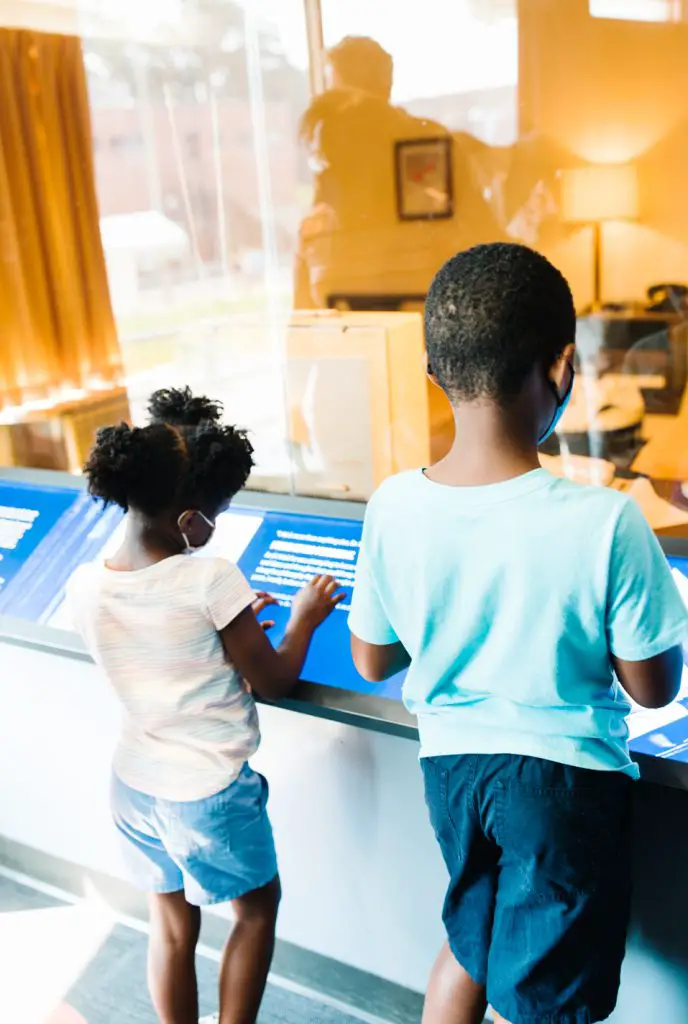
National Civil Rights Museum at the Lorraine Motel
For more articles on Black History in Travel:
- 10 Best US Cities to Learn About Black History
- Top 20 Best Black History Museums in the US to Visit
- 7 Best Sites to Learn about Black History in Washington, DC
If you enjoyed this post on Black History Museums You can Explore from Home, you might find the following family travel articles helpful.
Related Articles
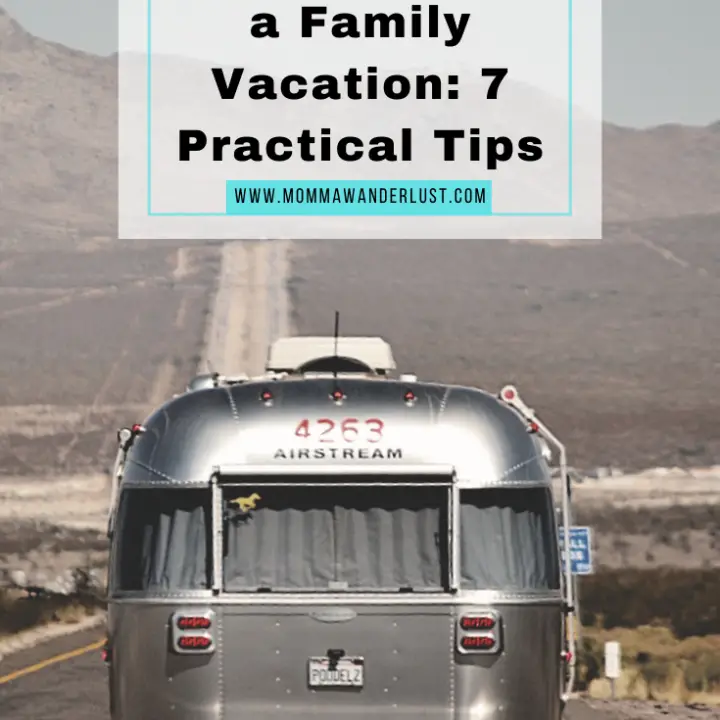
How to Plan a Family Vacation: 7 Practical Tips

Top 15 Family Travel Hacks

How to Travel More With a Full Time Job: 6 Top Tips

How to Save Money on Your Family Vacation: 14 Top Tips and Tricks
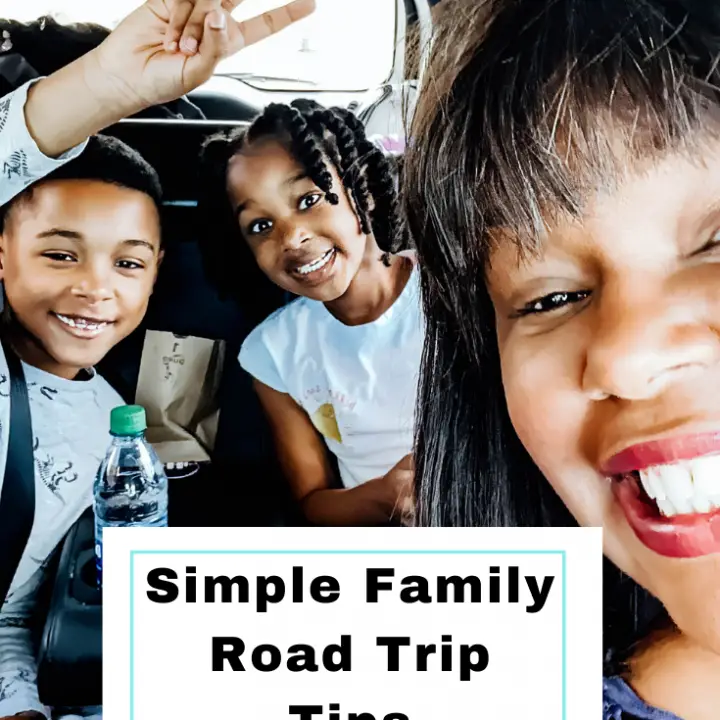
Simple Family Road Trip Tips
Pin for later:.
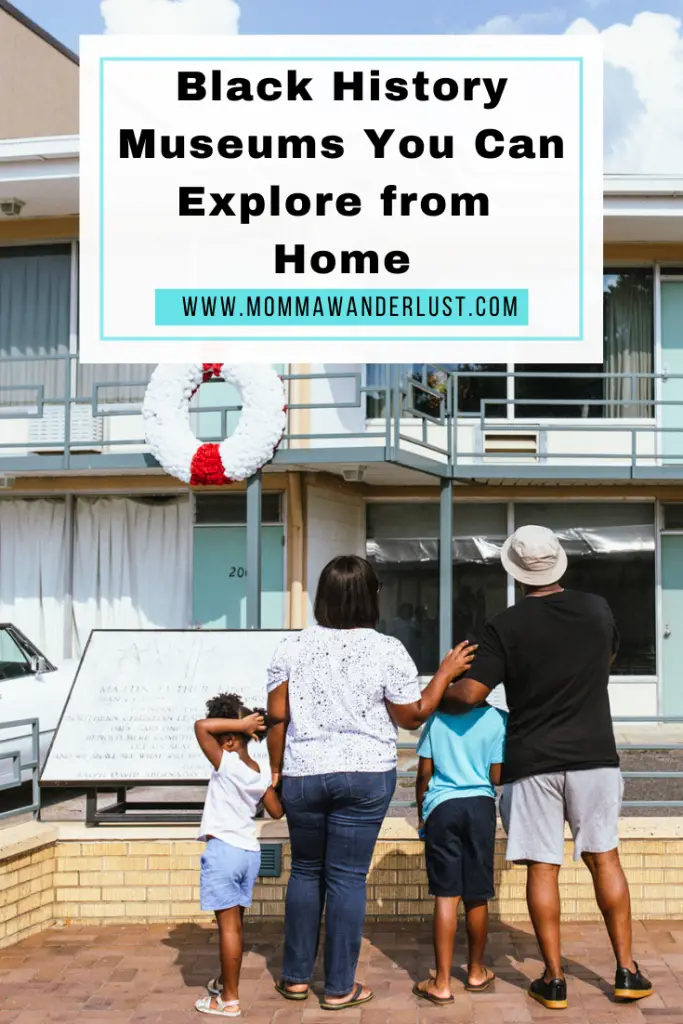
Up Next For You
Historic hampton house in miami review, fun summer activities for kids, top 16 best wanderlust movies for kids, 10 best us cities to learn about black..., 7 best sites to learn about black history..., 22 best black history museums in the us..., smithsonian museum virtual tours, teaching kids manners with cricut, 7 easy personalized gifts to make with your..., mindfulness activities for children with cricut, 24 amazing spring break ideas for families in 2024, 7 places to learn about black history in atlanta.
[…] Go on a virtual field trip to the Smithsonian, Schomburg Center for Research in Black Culture, or the Dance Theatre of Harlem (Find more here). […]
These are great!! Thank you
Leave a Comment Cancel Reply
Save my name, email, and website in this browser for the next time I comment.

Black History month
School Workshop
School Workshops Citizenship Dance Music Art Early years to KS3
Why book 'Black History month'

What activities are available during this educational workshop?
Which curriculum subjects do you cater for, citizenship [click to read].
Curriculum topics available: National regional religious and ethnic identities.
Dance [click to read]
Music [click to read], art [click to read], what size groups do you cater for, anything else, sorry, planmyschooltrip do not currently feature trips to this venue..
Please use the menu above for a great range of alternative options or complete the following form if you would like us to find you something similar.
Pages people also viewed
Teachers interested in this workshop also viewed the learning experiences below.
We are bursting with ideas on places that deliver first class teaching both outside the classroom and as in-school workshops. Feel free to use our tailor-made trip form and we can help you find the perfect experience for your class!

Ferris Wheel

Field Studies Council Amersham

Kingdom of Benin

Florence Nightingale Day
Get school trip offers by email
Unsubscribe at any time, we won't share your email with anyone else, just send you all the best offers and inspiration for your next class trip!

Join us on Social Media
© 2024 PlanMySchoolTrip
Why not share your opinion with fellow teachers by reviewing? Please only submit a review of Black-History-month if you have visited this place during a school trip:
ELECTROSTAL HISTORY AND ART MUSEUM: All You Need to Know BEFORE You Go (with Photos)
- (0.19 mi) Elektrostal Hotel
- (1.21 mi) Yakor Hotel
- (1.27 mi) Mini Hotel Banifatsiy
- (1.18 mi) Elemash
- (1.36 mi) Hotel Djaz
- (0.07 mi) Prima Bolshogo
- (0.13 mi) Makecoffee
- (0.25 mi) Amsterdam Moments
- (0.25 mi) Pechka
- (0.26 mi) Mazhor

Oxford University Press's Academic Insights for the Thinking World
The History of the World: Nixon visits Moscow
The history of the world: sixth edition.
- May 22 nd 2013
22 May 1972 The following is a brief extract from The History of the World: Sixth Edition by J.M. Roberts and O.A. Westad.
In October 1971 the UN General Assembly had recognized the People’s Republic as the only legitimate representative of China in the United Nations, and expelled the representative of Taiwan. This was not an outcome the United States had anticipated until the crucial vote was taken. The following February, there took place a visit by Nixon to China that was the first visit ever made by an American president to mainland Asia, and one he described as an attempt to bridge ‘sixteen thousand miles and twenty-two years of hostility.’

When Nixon followed his Chinese trip by becoming also the first American president to visit Moscow (in May 1972), and this was followed by an interim agreement on arms limitation – the first of its kind – it seemed that another important change had come about. The stark, polarized simplicities of the Cold War were blurring, however doubtful the future might be.
Reprinted from THE HISTORY OF THE WORLD: Sixth Edition by J.M. Roberts and O.A. Westad with permission from Oxford University Press, Inc. Copyright © 2013 by O.A. Westad.
J. M. Roberts CBE died in 2003. He was Warden at Merton College, Oxford University, until his retirement and is widely considered one of the leading historians of his era. He is also renowned as the author and presenter of the BBC TV series ‘The Triumph of the West’ (1985). Odd Arne Westad edited the sixth edition of The History of the World . He is Professor of International History at the London School of Economics. He has published fifteen books on modern and contemporary international history, among them ‘The Global Cold War,’ which won the Bancroft Prize.
Subscribe to the OUPblog via email or RSS . Subscribe to only history articles on the OUPblog via email or RSS .
- This Day in History
Our Privacy Policy sets out how Oxford University Press handles your personal information, and your rights to object to your personal information being used for marketing to you or being processed as part of our business activities.
We will only use your personal information to register you for OUPblog articles.
Or subscribe to articles in the subject area by email or RSS
Related posts:

Recent Comments
There are currently no comments.
Electrostal History and Art Museum

Most Recent: Reviews ordered by most recent publish date in descending order.
Detailed Reviews: Reviews ordered by recency and descriptiveness of user-identified themes such as wait time, length of visit, general tips, and location information.
Electrostal History and Art Museum - All You Need to Know BEFORE You Go (2024)
- (0.19 mi) Elektrostal Hotel
- (1.21 mi) Yakor Hotel
- (1.27 mi) Mini Hotel Banifatsiy
- (1.18 mi) Elemash
- (1.36 mi) Hotel Djaz
- (0.07 mi) Prima Bolshogo
- (0.13 mi) Makecoffee
- (0.25 mi) Amsterdam Moments
- (0.25 mi) Pechka
- (0.26 mi) Mazhor

IMAGES
COMMENTS
Ideas for Black History Month Field Trips. Click on a state to find places and memorials of interest. Alabama. Birmingham. Designed by black architect Wallace A. Rayfield. Location of the 1963 bombing which killed four little girls — Denise McNair, Cynthia Wesley, Addie Mae Collins, and Carol Robertson.
34. Celebrate the "Black Lives Matter at School" movement. "Black Lives Matter at School" is a national coalition organized for racial justice in education. It encourages all educators, students, parents, unions, and community organizations to join an annual week of action during the first week of February each year.
Here's your guide to February's top 10 virtual field trip picks. View more digital programming here. "Underground Railroad Immersive Experience" presented by Ohio History Connection; $135 ...
Black History Tours is a national multicultural student tour operation and destination management company that is dedicated to educating America's youth about African-American history. The inspiration for the start of Black History Tours is derived from a strong conviction and realization that empowerment, pride and awareness can make even ...
Find innovative Black History Month ideas for school to inspire students of all ages. From interactive projects to educational discussions, celebrate and explore the rich history and contributions of African Americans in your classroom. ... With technology, students can take virtual field trips to significant sites in Black history, such as the ...
Create Meaningful Learning Experiences for Kids This Black History Month. Kai XR's virtual field trips will deepen your student's learning and enable them to explore meaningful school projects for Black History Month. These immersive learning experiences can: Help students connect to important figures in Black history.
This virtual field trip to visit the Official Obama Portraits is a thought-provoking Black History Month online activity to use with high school students. Use this to support and develop a lesson or unit on the progression of civil rights to demonstrate how achieving equity for all is still a work in progress today.
In preparation for several upcoming significant historical, cultural and societal events, the Center for Interactive Learning and Collaboration (CILC) has curated a list of live, interactive virtual field trips that educators can access to enrich discussions surrounding Black History Month, President's Day, Women's History Month and Earth Day. . The diverse list of interactive learning ...
This field trip package allows guests to experience the history and culture of African-Americans in NYC from the earliest days of slavery to the emergence of Black culture as a prominent fixture in the United States. Price: $45 Duration: 4 hours. The Harlem Edutainment Company offers cost-effective, easy-to-plan and quality Black History Month ...
February: Black History Month. Celebrate Black History Month with an in-person field trip to the American Writers Museum this February! Our field trips will explore the influence of Black writers on American history and literature. Students will receive a 15-20 minute introduction to the museum that will demonstrate how Black authors are ...
Black History Month Field Trip Ideas. From the time I was a little girl I was aware that while children of all colors lived and went to school together in Canada where I lived, this was not always the case in the country we often visited, the U.S.A. I can remember asking my mom why the elderly lady had to sit all the way back with her shopping ...
Black History Month. Black history is American history. We've compiled the following lesson plans, teaching ideas and online resources to help teachers celebrate Black history in February and every month throughout the school year. See the materials below, organized by grade level.
1. Booker T. Washington. Read-Aloud — Fifty Cents and a Dream: Young Booker T. Washington by Jabari Asim. Quote —"Success is to be measured not so much by the position that one has reached in life as by the obstacles which he has overcome.". 2. Ruby Bridges. Read-Aloud — I Am Ruby Bridges by Ruby Bridges.
In Nassau, on Long Island, there is an African-American Museum that focuses on history, art, culture, and education. They offer tours, genealogical research, and hands-on art workshops on Saturdays for all ages. The African Burial Ground in lower Manhattan was discovered in 1991 during excavation work for a new federal building. Originally located outside the boundaries of New Amsterdam ...
In this Virtual Field Trip, we celebrate Black History Month and the contributions of Black Explorers from the past and present. We explore the North Pole wi...
If you can score passes to the National Museum of African American History and Culture, you won't want to miss your chance to check out this latest addition to the Smithsonian museums. But if Washington, D.C. isn't on your February travel list, there are several other Black History Month destinations worth a field trip.
February 11, 2021. February is Black History Month, and with that comes the responsibility to highlight the achievements and culture of the black community. In Spanish class, that means shedding light on (the sometimes overlooked) Afro-Latino culture. While we should all arguably be teaching and sharing aspects of Afro-Latinidad all year, don ...
A history teacher in Virginia recently took his class deeper by taking the class to where slavery began in the United States. The Norfolk, Va., teacher took a group of 22 students to Fort Monroe in Hampton, Va., where the first enslaved Africans arrived, with hopes of helping his students create a more meaningful connection to what they learned at school.
Free Black History Month Interactive Bulletin Board - ECS Instructional Tech February 7, 2022 - 6:08 PM Go on a virtual field trip to the Smithsonian, Schomburg Center for Research in Black Culture, or the Dance Theatre of Harlem (Find more here).
Why book 'Black History month'. African Mask Painting and Dance workshop. Children learn about African art and discover that most African masks are thought to portray the faces of spirits and gods. On day one the children decorate their own masks with geometric designs. On day two they can use their handicrafts to learn our African Mask Dance.
Price per person. 641,69. View details. About the tour Reviews 10. 8 days / 7 nights. St. Petersburg Moscow. We offer you a unique opportunity to visit Russia's two largest cities, Moscow and St. Petersburg. This fascinating, week-long tour will take you to the historic Russian capitals that have always played the most important part in the ...
Art MuseumsHistory Museums. Write a review. Full view. All photos (22) Suggest edits to improve what we show. Improve this listing. Revenue impacts the experiences featured on this page, learn more. The area. Nikolaeva ul., d. 30A, Elektrostal 144003 Russia.
22 May 1972 The following is a brief extract from The History of the World: Sixth Edition by J.M. Roberts and O.A. Westad. In October 1971 the UN General ... When Nixon followed his Chinese trip by becoming also the first American president to visit Moscow (in May 1972), and this was followed by an interim agreement on arms limitation - the ...
Art MuseumsHistory Museums. Write a review. Full view. All photos (22) Suggest edits to improve what we show. Improve this listing. The area. Nikolaeva ul., d. 30A, Elektrostal 144003 Russia. Reach out directly.